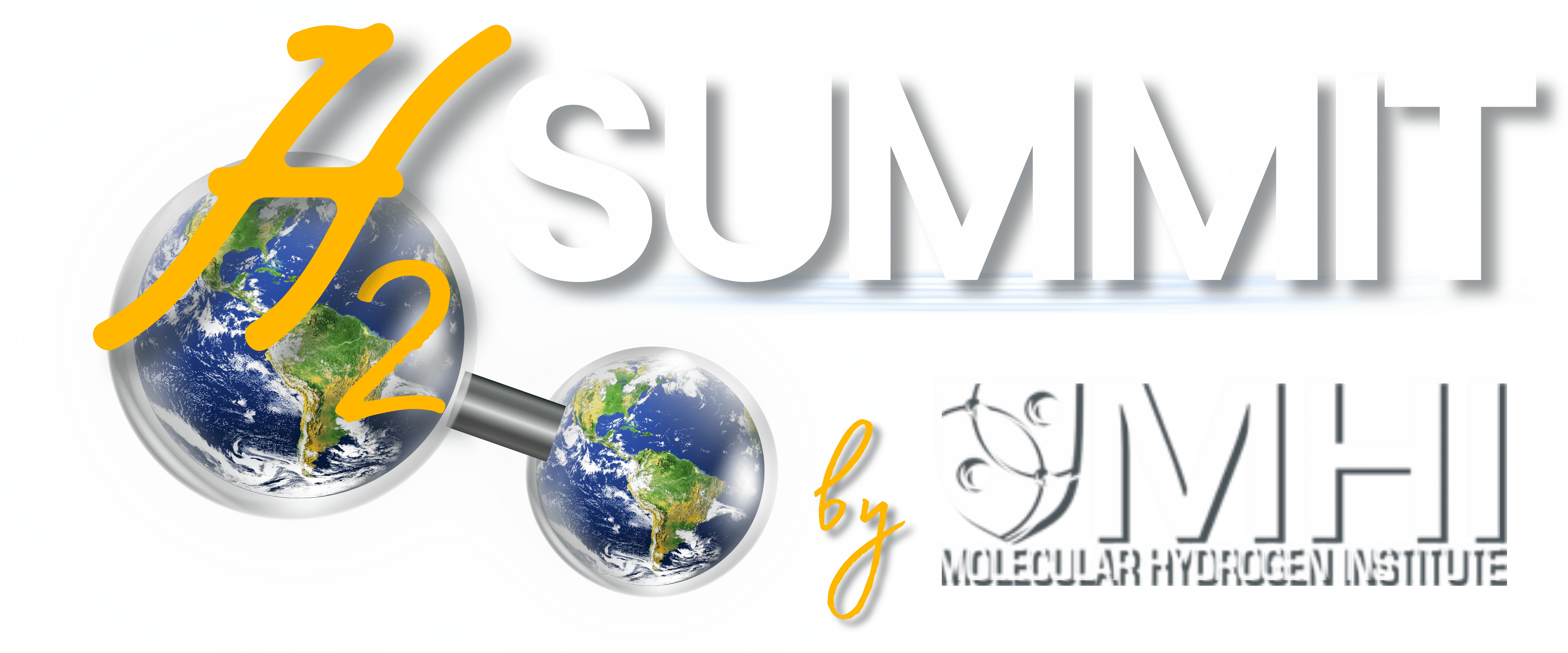Confirmed Speakers
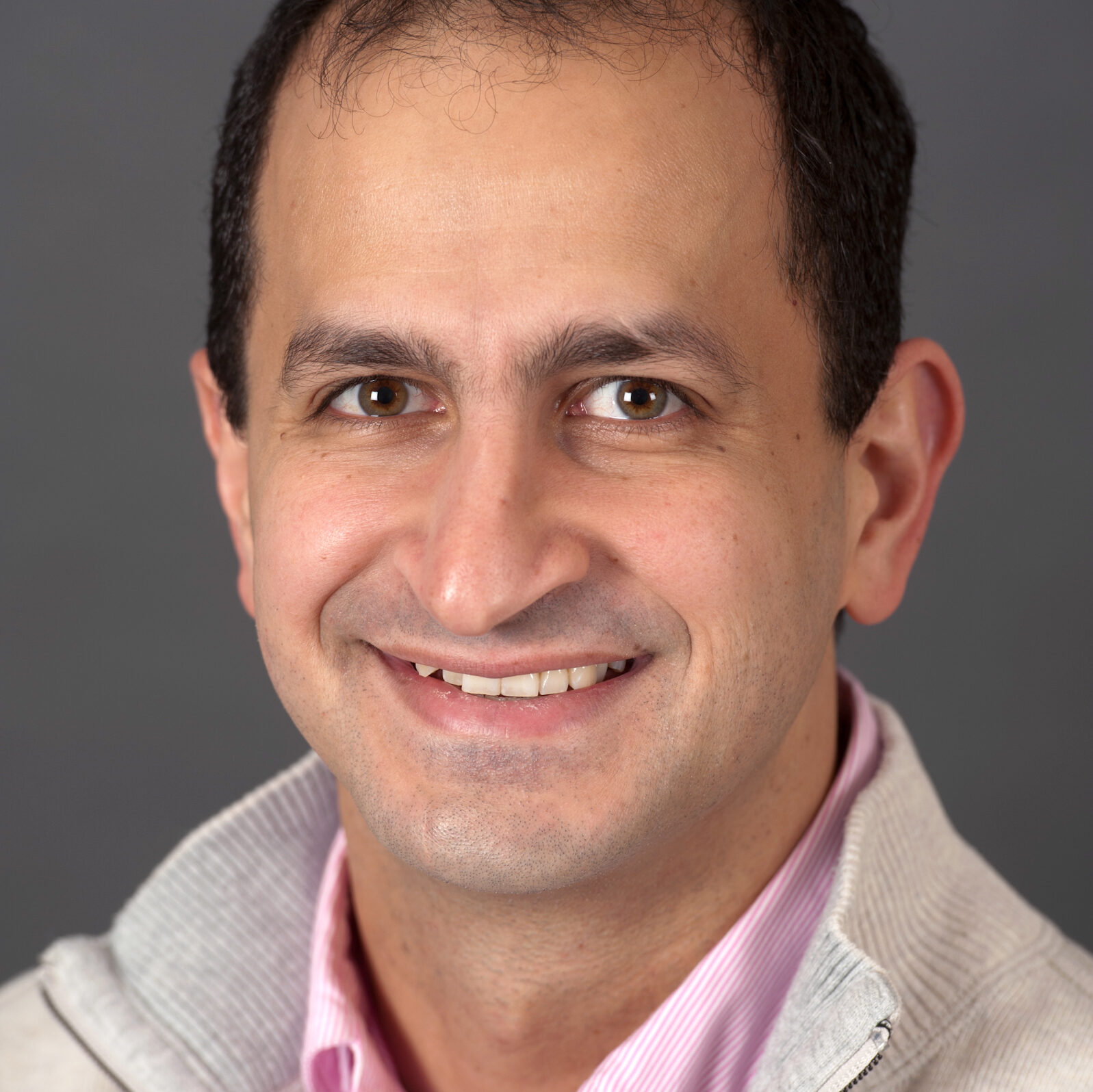
Prof. John Kheir, MD.
Keynote Speech from the Organizers
Associate Professor of Pediatrics,
Harvard Medical School
Staff Physician,
Boston Children’s Hospital
John Kheir, MD is a distinguished cardiac intensive care physician at Boston Children’s Hospital. Since joining the Heart Center in 2010, he has dedicated himself to caring for critically ill children with congenital heart disease. Dr. Kheir is an Associate Professor of Pediatrics at Harvard Medical School. His Translational Research Lab has been continuously federally funded for more than 16 years to develop innovative diagnostics and treatments for oxygen deprivation, including the development of injectable oxygen to reduce patients from profound hypoxemia and the translation of hydrogen gas from animal to FDA-regulated human trials. His dual commitment to clinical excellence and research innovation drives his mission to bring life-saving technologies to market.
Coming Soon

Dr. Tyler W. LeBaron, MSc., PhD.
OPENING CEREMONY SPEECH FROM THE ORGANIZERS
Founder and Executive Director,
Molecular Hydrogen Institute
Adjunct Professor,
Southern Utah University
Tyler W. LeBaron, MSc, Ph.D., is the Founder and Executive Director of the science-based, nonprofit, Molecular Hydrogen Institute. His background is in biochemistry, physiology, and exercise science. He has taught physiology and currently teaches exercise physiology and chemistry lab classes at Southern Utah University as an adjunct instructor. He Interned at Nagoya University Japan in the department of Neurogenetics to research the molecular mechanisms of hydrogen gas on cell-signaling pathways. Tyler is a director of the International Hydrogen Standards Association (IHSA) and the International Molecular Hydrogen Association (IMHA). He speaks at medical conferences in the US for doctors CMEs/CEUs, and at academic biomedical hydrogen symposia and conferences around the world. Also, he is a member of the Academic Committee of Taishan Institute for Hydrogen Biomedical Research. He collaborates with researchers at home and abroad and helps advance the education, research, and awareness of hydrogen as a potential therapeutic medical gas.
Molecular hydrogen (H₂) has emerged as a promising therapeutic agent, supported by over 3,000 studies, including 200+ human trials and research across 200 disease models. Early findings indicate its potential as a selective antioxidant, capable of reducing oxidative stress, modulating inflammation, and offering protective effects in various disease models. Despite this growing body of scientific evidence, skepticism towards molecular hydrogen persists.
This presentation aims to explore the roots of this skepticism by addressing common myths and misconceptions surrounding H₂ therapy. The relatively recent discovery of hydrogen’s therapeutic benefits, contrasted with its long history as an industrial gas, often leads to comparisons with unproven “miracle” treatments, fueling doubts about its legitimacy. Additionally, the commercial proliferation of hydrogen products, sometimes marketed with exaggerated claims, has further muddied the waters, making it challenging for the public and healthcare professionals to distinguish between fact and fiction.
However, there are also legitimate reasons to be skeptical:
i) If infusing oxygen gas into water doesn’t work, then why would infusing H₂ gas into water?
ii) Doesn’t the microbiome produce more H₂ gas than what can be ingested from hydrogen water?
iii) Unlike O₂ that binds to hemoglobin, there is no protein carrier for H₂, so how does it reach tissues?
iv) H₂ has a strong covalent bond; how can it possibly act as an antioxidant?
v) Humans lack hydrogenase enzymes, so how can H₂ have any biological effect?
This presentation will dissect these myths by presenting scientific evidence that logically validates and addresses these and other questions. By demystifying molecular hydrogen, we aim to encourage a more informed and open-minded approach to its potential applications in medicine.
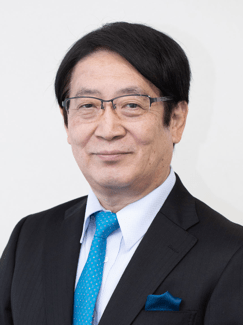
Prof. Shigeo Ohta, PhD.
INVITED ACADEMIC GUEST Keynote Speech
Professor,
Department of Neurology
Medicine, Graduate School of Medicine; Institute for Advanced Sciences, Nippon Medical University; H2 Global Group
Dr. Shigeo Ohta is currently a Professor Emeritus at Nippon Medical University, Tokyo, Japan and a Visiting Professor of Juntendo University, Tokyo, Japan. He gradated from the university of Tokyo in 1974, and received his phD from the university of Tokyo in 1979. He is serving as the Honorary Presidents of the Japanese Society of Mitochondrial Research and Medicine, the Japanese Biomedical Society for Molecular Biology and International Society for Hydrogen Medicine and Biology. His total publication citations are 17,400 and his h-index is 70. In the hydrogen medicine, he discovered the biomedical function of molecular hydrogen and published a historical article in Nature Medicine 2007 and is known as the pioneer of hydrogen medicine. This article has been cited 2,700 and 1,900 times by Google Scholar and Scopus, respectively. In addition, he is serving as the directors of hydrogen companies including H2 Global Group, Ostrava, Czech Republic.
Molecular hydrogen (as a chemical formula H2) was regarded as a non-functional and biologically inert gas in mammalian cells for a long tike. After the publication of our historical article in Nature Medicine in 2007, the new field of hydrogen medicine and biology has initiated and are developing. H2 is outstandingly unique in many respects. H2 has great advantages for medical applications because of no cytotoxicity or no adverse effect. An increasing body of research has revealed diverse potential for therapy or treatment of acute diseases, prevention of chronic diseases, metal diseases, and radiation protection. H2 has multiple specificities for different effects in most organs. H2 improved quality of life not only for patients with various diseases, but also in healthy people, including sports, exercise and beauty. Moreover, by improving higher plants, H2 can arise a strong impact on agriculture.
There are various ways to ingest H2 into the body: Inhalation of H2 gas, drinking H2 water, injection of H2 saline, application eye drop, and H2 bathing.
H2 exhibits multiple effects, including anti-oxidation, anti-inflammatory, and anti-allergic effects, stimulation of energy metabolism, and regulation of cell death and autophagy. Since H2 cannot react with most biological molecules, it is critical to elucidate the molecular mechanism by which H2 exerts multiple functions for many diseases. The oxidized porphyrins have recently been discovered as the target of H2.
H2 has the potential to address a wide range of serious issues, including cardiac arrest, Alzheimer’s-type dementia, metabolic syndrome, advanced-stage of cancer, inflammatory cytokine storms, healthcare, beauty, and agriculture. The mission of hydrogen medicine is to overcome these unsolved ailments.

Prof. Mami Noda, PhD.
INVITED GENERAL PUBLIC GUEST Keynote Speech
Chikushi Clinic;
Institute of Mitochondrial Biology and Medicine of Xi’an Jiaotong University School of Life Science and Technology; RUDN University
Dr. Mami Noda is a pathophysiologist and pharmacologist. After being postdoctoral fellow at the Rockefeller University, she has been conducting brain science in a Laboratory of Pathophysiology in the Graduate School of Pharmaceutical Sciences at Kyushu University. After retiring the Kyushu University, she has been involved in teaching and helping research in several universities. She is now also in a obsterics and gynecology clinic, helping women’s health.
Molecular hydrogen (H2) has multiple properties such as anti-apoptotic, anti-inflammatory, and anti-oxidative properties, having wide variety of beneficial outcomes. Effects of H2 are often slow to show the effects. The amount of H2 in drinking water is far less than that of inhalation. H2, especially in drinking water, can be used for therapy but rather for maintenance and improvement of the health condition or prevention of disorders. From mechanistic point of view, the problem is that pharmacokinetics of H2 in drinking water is largely unknown, especially in the brain. This video shows examples of effects of H2 by long-term intake of H2. Also, the mechanism is discussed from homeostatic and endocrinical point of view, trying to understand why H2 has such a wide variety of effects. Due to the endocrinological effects, H2 has a corrective effect on the neuro-immuno-endocrine system and determines the functioning of the body’s homeostatic system. It will be plausible why intake of H2 helps health and slow aging.

Prof. Kinji Ohno, MD., PhD.
INVITED GENERAL PUBLIC GUEST Keynote Speech
Vice Dean, Nagoya University of Arts and Sciences
Prof. Kinji Ohno obtained his MD degree at Nagoya University in 1983. He was trained as a neurologist for 5 years. He became a graduate student at Nagoya University Graduate School of Medicine in 1988, and obtained his PhD degree in 1992. From 1993 to 2004, he worked at Prof. Andrew G. Engel’s laboratory at Neurology of Mayo Clinic, Rochester, MN. From 2004 to 2024, he led Division of Neurogenetic, Nagoya University Graduate School of Medicine as a professor. In 2020, he became Vice President of Nagoya University. His research interests include (i) molecular mechanisms of molecular hydrogen, (ii) physiology and pathology of the neuromuscular junction, (iii) RNA metabolisms in physiology and pathology, (iv) development of therapeutic strategies for muscle, bone, and joint diseases, (v) gut microbiota in neurodegenerative diseases, and (vi) quantal effects of extremely weak electromagnetic field on human diseases. In 2024, he became a professor at Nagoya University of Arts and Sciences.
Hydrogen is effective in a diverase array of human diseases and disease models, but their underlying mechiansms have not been fully elucidated. Our studies indicate that hydrogen is unlikely to scavenge radical oxygen species in human and rodent bodies. First, hydrogen water was markedly effective in a rat model of Parkinson’s disease. Although continuous hydrogen gas inhalation or lactulose administration had no effects, intermittend exposure to hydrogen gas had variable but less efficient effects compared to hydrogen water. Second, inhalation of hydrogen gas for 10 min twice a day for 4 weeks increased a urinary marker for oxdidative stress in patients with Parkinson’s disease. Third, hydrogen suppressed abnormally activated Wnt/beta-catenin signaling by enhancing phosphorylation and degradation of beta-catenin. Fourth, extensive gene expression analysis showed that hydrogen induced heat-shock response, which subsequently led to transient arrest of cell cycles and upregulation of collagen biosynthesis. Fifth, hydrogen caused mitonuclear protein imbalance, and provoked mitochondrial unfolded protein response (mtUPR). Sixth, hydrogen enhanced proliferation of cancer cells by provoking mtUPR. Our studies all point to the notion that hydrogen acts as a signaling molecule, although the exact target of hydrogen reimans elusive.
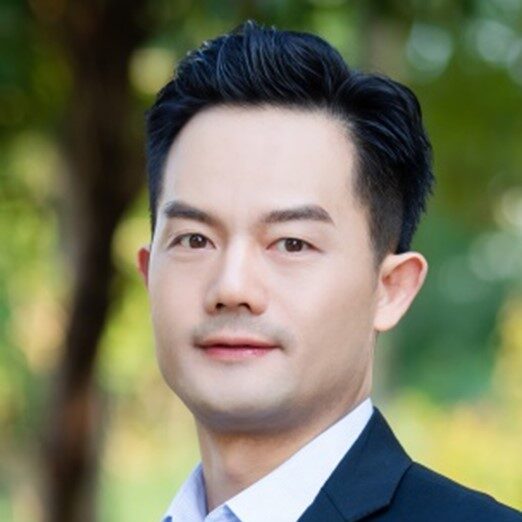
Prof. Qianjun He, PhD.
何前军教授
Professor,
Shanghai Jiao Tong University (SJTU)
Director,
R&D Center at the Shenzhen Research Institute
Dr. Qianjun He earned his PhD in 2010 from Shanghai Institute of Ceramics, Chinese Academy of Sciences, and was then assigned as an Assistant Professor there. He received a Marie Curie Fellowship and moved to University of Leeds in 2012. After two years, he joined the Laboratory of Molecular Imaging and Nanomedicine, NIBIB, NIH, as a postdoc. In 2015, he joined Shenzhen University as a Full Professor and the Chief of the Lab of Advanced Nanomedicines. In 2022, he moved to Shanghai Jiao Tong University (SJTU) and was appointed a Distinguished Professor and the Director of the R&D Center, Shenzhen Research Institute of SJTU. His research focuses on the engineering and development of intelligent nanomaterials and nanomedicines for precision gas therapy of major diseases. He has pioneered a unique research field of “nanomaterials-mediated gas therapy”, and has published 100+ papers with an h-index of 60 on leading journals including Science Advances, Nature Communications, and Advanced Materials. He was recognized as a “Highly Cited Researcher” and as a “World’s Top 2% Scientists” with Career Scientific Impact. He is sitting the Associate Editors of Medical Gas Research and Chemical Synthesis.
Hydrogen molecules have a wide-spectrum anti-oxidation and anti-inflammation effect, and exhibit a clear biological effects and high biosafety in treatment of many inflammation-related diseases. Hydrogen therapy becomes an emerging and promising therapeutic strategy. However, hydrogen medicine currently faces three major problems, including (1) what is the fundamental principle of hydrogen therapy; (2) how to detect hydrogen molecules in vivo; (3) how to deliver hydrogen molecules to the focus. In an attempt to address these issues, our research group does researches about principle exploration, tool development and materials application, harvesting a series of innovative achievements, mainly including: (1) we have discovered the biological target of hydrogen molecules, and revealed the fundamental principles of H2 anti-inflammation, anti-cancer and anti-senescence; (2) we have developed the first bio-probe of H2, and testified high bio-barriers-crossing capability of H2; (3) we have developed a series of novel H2-delivering biomaterials to enhance H2 delivery efficacy and applied these materials for treatment of major diseases.[1-10] This report will present the related research advances achieved by us in the recent years.
氢分子具有广谱抗炎抗氧化效应,在炎症相关的众多重大疾病中展现出明确的生物学效应和较高的生物安全性。氢气治疗成为一种新兴的、且非常有应用前景的治疗策略。但目前氢医学面临着三大难题:(1)氢气治疗的原理是什么;(2)如何在体内检测氢气;(3)如何向体内递送氢气。针对这三大难题,本课题组在原理探究、工具开发、材料应用三个方面开展研究,取得了系列创新性研究成果,主要包括:(1)发现了氢分子生物学靶点,揭示了氢分子抗炎、抗癌、抗衰的基本原理;(2)开发了首例氢分子生物探针,证实了其高的跨生物屏障能力;(3)开发了系列新型氢递送医用材料,提高了氢气递送效率,并应用于重大疾病治疗。本报告将汇报本课题组近年来在这三个方面的研究进展。[1-10]
Keywords: Hydrogen medicine; Nanomedicine; Drug delivery; Anti-inflammation
References
- Qingqing Xu, Shengqiang Chen, Lingdong Jiang, Chao Xia, Lingting Zeng, Xiaoqing Cai, Zhaokui Jin, Shucun Qin, Wenjiang Ding, Qianjun He, Sonocatalytic hydrogen/hole-combined therapy for anti-biofilm and infected diabetic wound healing, National Science Review 2023, 10, nwad063.
- Shengqiang Chen, Yanxia Zhu, Qingqing Xu, Qi Jiang, Danyang Chen, Ting Chen, Xishen Xu, Zhaokui Jin, Qianjun He, Photocatalytic glucose depletion and hydrogen generation for diabetic wound healing, Nature Communications 2022, 13, 5684.
- Bin Zhao, Lingting Zeng, Danyang Chen, Songqing Xie, Zhaokui Jin, Guanglin Li, Wei Tang, Qianjun He, NIR-photocatalytic regulation of arthritic synovial microenvironment, Science Advances 2022, 8, eabq0959.
- Wanjun Gong, Lingdong Jiang, Yanxia Zhu, Mengna Jiang, Danyang Chen, Zhaokui Jin, Shucun Qin, Zhiqiang Yu, Qianjun He, An activity-based ratiometric fluorescent probe for in vivo real-time imaging of hydrogen molecules, Angewandte Chemie International Edition 2022, 61, e202114594.
- Yangsen Xu, Mingjian Fan, Wenjuan Yang, Yonghao Xiao, Lingting Zeng, Xiao Wu, Qinghua Xu, Chenliang Su, Qianjun He, Homogenous carbon/potassium-incorporation strategy for synthesizing red polymeric carbon nitride capable of near-infrared-photocatalytic H2 production, Advanced Materials 2021, 33, 2101455.
- Danyang Chen, Zhaokui Jin, Bin Zhao, Yingshuai Wang, Qianjun He, MBene as a theranostic nanoplatform for photocontrolled intratumoral retention and drug release, Advanced Materials 2021, 33, 2008089.
- Bin Zhao, Yingshuai Wang, Xianxian Yao, Danyang Chen, Mingjian Fan, Zhaokui Jin, Qianjun He, Photocatalysis-mediated drug-free sustainable cancer therapy using nanocatalyst, Nature Communications 2021, 12, 1345.
- Jin Meng, Zhaokui Jin, Penghe Zhao, Bin Zhao, Mingjian Fan, Qianjun He, A multistage assembly/disassembly strategy for tumor-targeted CO delivery, Science Advances 2020, 6, eaba1362.
- Yingshuai Wang, Tian Yang, Qianjun He, Strategies for engineering advanced nanomedicines for gas therapy of cancer, National Science Review 2020, 7, 1485.
- Penghe Zhao, Zhaokui Jin, Qian Chen, Tian Yang, Danyang Chen, Jin Meng, Xifeng Lu, Zhen Gu, Qianjun He, Local generation of hydrogen for enhanced photothermal therapy, Nature Communications 2018, 9, 4241.

Prof. Xuemei Ma, PhD.
Professor,
Beijing University of Technology, College of life science and bioengineering
Xuemei Ma, Professor at the School of Chemical and Life Sciences, Beijing University of Technology, and a member of the University’s Academic Committee. She has served as the Deputy Director of the Hydrogen Molecular Biomedical Branch of the Chinese Medical Association for the Health of the Elderly, Founding Director of the BJUT – Huaqing Future Health Research Institute, a member of the Skin Health China Technology Alliance, She also holds a member of the Chinese Medical Association for the Health of the Elderly, and an expert in the Think Tank for the Health of the Elderly in China, among other positions.
Her team is one of the pioneers in hydrogen gas biological research both domestically and internationally, dedicated to elucidating the biological basis of the emerging hydrogen medicine that treats multiple diseases without the use of drugs at the molecular, cellular, and holistic levels. They conduct in-depth basic research and clinical translation, particularly in the areas of severe trauma treatment, space biology, cancer prevention and treatment, chronic diseases, and the mechanism of action of hydrogen molecules. They have innovatively proposed a new mechanism for the biological effects of hydrogen based on the evolution of life and have achieved breakthroughs in various aspects. This provides a theoretical basis and technical support for this emerging innovative medical approach to better serve clinical practice and the field of large health.
She has published more than a hundred scientific papers and applied for more than forty patents related to hydrogen molecule medicine. She has led and participated in projects including national major projects, “863” projects, public welfare industry projects, and the National Natural Science Foundation, including two national key projects related to hydrogen medicine. She has participated in obtaining “National Class I New Drug” and the second prize of the “Science and Technology Award of the Ministry of Education – Natural Science Award for Outstanding Scientific and Technological Achievements of Higher Education Institutions” and other awards.
Abstract:
The presentation “From Energy to Evolution: The Origin of Hydrogen Functions in Eukaryotes” explores the critical role of hydrogen in the evolution and biological functions of eukaryotic cells. Starting with an overview of research on hydrogen’s impact on trauma, the presentation delves into its broader biological implications. Hydrogen, once abundant on early Earth, played a pivotal role in the evolution of life, especially as organisms adapted from a low-oxygen, high-hydrogen environment. The presentation highlights the discovery of hydrogen’s ability to influence cellular processes, including reducing inflammation, promoting tissue remodeling, and activating stem cells. Additionally, the role of hydrogenases, enzymes that catalyze hydrogen-related reactions, in both microorganisms and eukaryotic cells is discussed, suggesting hydrogen’s fundamental impact on metabolic processes. The research presented underscores hydrogen’s multifaceted role in cellular activity, proposing that its biological functions extend far beyond its known antioxidant properties. The findings prompt a deeper exploration of hydrogen’s mechanisms within the context of both ancient evolutionary processes and modern biological systems. This presentation provides a comprehensive look at how hydrogen’s biological actions are intricately linked to life on Earth, from its origins to present-day cellular functions.

Prof. Shucun Qin, MD, PhD
Professor and Director,
Taishan Institute of Hydrogen Biomedicine Reasearch, Key Laboratory of Atherosclerosis in University of Shandong and Institute of Atherosclerosis, Shandong First Medical University & Shandong Academy of Medical Sciences
Professor and director of Atherosclerosis Institute of Shandong First Medical University, president of Hydrogen Biomedical Research Institute in China. He served as a Postdoc of Columbia University. He is renowned expert in the basic and clinical research of cardiovascular and cerebrovascular diseases related to lipid metabolism, awarded over ten projects of the National Natural Science Foundation of China. He published over 270 research papers in journals including Nature Medicine, ATVB, JCEM, JBC, and JLR. He also serves as president of the China Hydrogen Biomedical Society and president of the International Society for Hydrogen Medicine and Biology. His personal honor includes Distinguished Professor of Mount Taishan Scholars, and so on.
Since 2007, hydrogen biomedical research has begun to move beyond the laboratory towards clinical applications. Chinese scholars’ research papers and entrepreneurs’ patented products have made outstanding contributions to the development of hydrogen medicine. Firstly, a series of research achievements have been made in the fields of metabolic abnormalities, radiation damage, ischemia and reperfusion injury, skin injury, and related diseases. For example, Professor Qin’s team’s research on the protective effect of hydrogen molecules on oxidative stress-related damage in multiple organ tissues won the Shandong Provincial Science and Technology Progress Award as early as 2014. Secondly, in the basic research on the mechanism of hydrogen molecule effects, scholars continue to propose new scientific hypotheses and provide corresponding research data. For example, the iron porphyrin hydrogen molecule hypothesis proposed by Professor He’s team in 2022 has received high praise from domestic and foreign peer experts. Thirdly, in order to meet the needs of efficient prevention and control effects and precision medicine, the research and development of various new hydrogen molecule donors, including hydrogen molecule micro nano particles, is flourishing. In recent years, corresponding high-quality articles have also been published one after another. Fourthly, since 2020, hydrogen medicine, as a new clinical application field, has also made great progress. For example, hydrogen therapy has been approved as an auxiliary treatment for chronic obstructive emphysema and COVID-19. Main problem and solution: Some products in the market that claim to be hydrogen medicine and hydrogen health have exaggerated and false advertising. The chaos in the hydrogen product market urgently needs to be regulated by national regulatory authorities in accordance with laws and regulations, and the formulation of corresponding industry and national standards has become an urgent task.

Prof. Xuejun Sun, Ph.D
Retired Professor,
Second Military Medical University of China;
Honorary Chairman,
Shanghai Huikang Hydrogen Medical Research Center
Prof. Xuejun Sun is a retired professor from the Second Military Medical University of China and currently serves as the honorary chairman of the Shanghai Huikang Hydrogen Medical Research Center. Since 2007, he has been committed to the research and popularization of the biomedical effects of hydrogen, and has published more than 100 peer-reviewed papers on the medical effects of hydrogen, edited and published four books on hydrogen medicine, written thousands of popular science articles on hydrogen medicine, participated in the establishment of several hydrogen medicine academic organizations, and played an important role in promoting the academic research and application of hydrogen medicine in China and even internationally. In 2022, he was selected as an “distinguished leadership in molecular hydrogen research” by the European Academy for Molecular Hydrogen Research in Biomedicine.
After Professor Shigeo Ohta’s team discovered that trace amounts of hydrogen have powerful medical effects in 2007, the biomedical community has conducted a large number of exploratory studies on the medical effects of hydrogen. Hydrogen can selectively neutralize hydroxyl radicals, resulting in antioxidant damage and alleviating inflammatory damage. Hydrogen medicine has three outstanding characteristics, namely significant human safety, selective antioxidant effects, and strong biological tissue diffusion ability. These characteristics make hydrogen have great potential for application in daily health fields, such as exercise assistance, disease treatment assistance, and health promotion. This speaker will introduce the above content, which is suitable for non-professional peers who are concerned about hydrogen health, hydrogen health medicine enthusiasts, hydrogen health product marketers, and ordinary users.
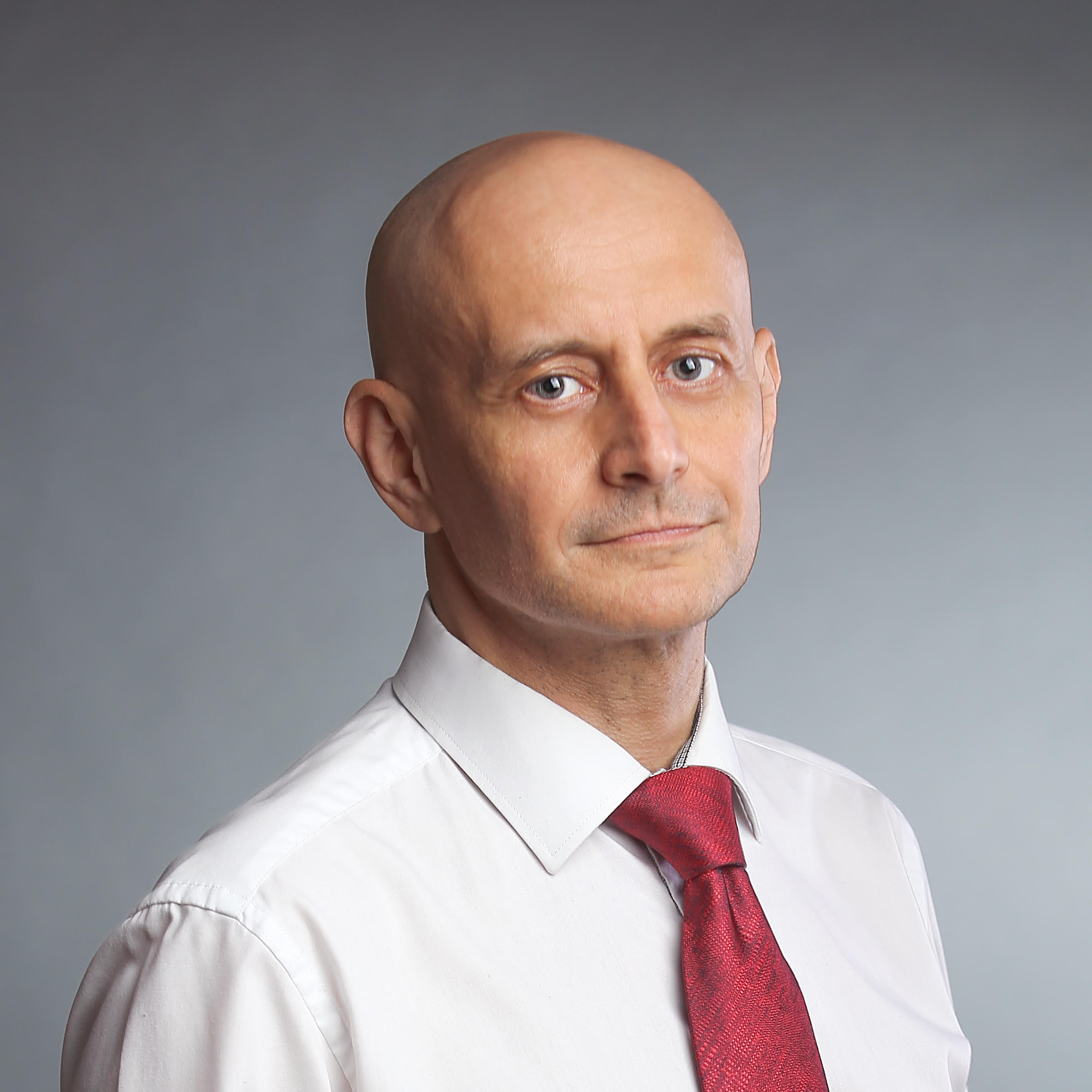
Prof. Sergej M. Ostojic, MD, PhD
Professor of Nutrition,
University of Agder,
Professor of Biomedical Sciences,
University of Novi Sad
Professor of Health Sciences,
University of Pécs
Dr. Sergej M. Ostojic earned his MD from the University of Belgrade in 1996 and a PhD in Medical Sciences in 2003. He completed further training at Mayo Clinic and Harvard. Currently, he is a Professor of Nutrition at the University of Agder, Biomedical Sciences at the University of Novi Sad, and Health Sciences at the University of Pécs. His research focuses on mitochondrial health and nutritional interventions for chronic diseases. Dr. Ostojic has published over 320 peer-reviewed articles, authored 13 book chapters, and holds 11 patents. He is an Associate Editor for Clinical Nutrition ESPEN and Research in Sports Medicine, among others. He has received numerous prestigious research grants and is active in international research networks such as the WHO’s European Childhood Obesity Surveillance Initiative and the Global Burden of Disease project.
Abstract
Molecular hydrogen (H2, dihydrogen) has emerged as a novel medical gas with applications spanning various biomedical domains, particularly within neurology and neuroscience. Its therapeutic potential has been explored in conditions ranging from Parkinson’s disease and stroke to traumatic brain injury and cancer, with both preclinical and clinical studies highlighting its protective and therapeutic effects. However, the specific mechanism of action of dihydrogen in the brain remains incompletely understood. This invited lecture aims to summarize and discuss the hydrogen-induced modulation of several neurotransmitters and brain-specific biomolecules/metabolites, shedding light on its role in both organ-specific and systemic pathways relevant to health and disease.
Keywords: dihydrogen, brain, MR spectroscopy, glutamate/GABA-glutamine, SCFAs
Sergej M. Ostojic 1 2 3
1 Applied Bioenergetics Lab, University of Novi Sad, Serbia
2 Department of Nutrition and Public Health, University of Agder, Norway
3 Faculty of Health Sciences, University of Pecs, Hungary

Prof. Jan Slezak, M.D., DSc,
Head,
Department of Histochemistry
and Electron Microscopy,
Institute for Heart Research,
Slovak Academy of Sciences
Prof. MD. Ján Slezák, PhD., DSc., FIACS, Dr. h. c., is a leading senior scientist at the Slovak Academy of Sciences’ Institute for Heart Research, with a distinguished career that began at Comenius University’s Faculty of Medicine in Bratislava. His research, initially focused on the physiology and pathology of the heart, has made significant strides in understanding heart adaptation, injury and failure. Recently, Prof. Slezák has pivoted to researching molecular hydrogen’s role in preventing and treating lifestyle diseases. His contributions have earned him memberships in the most prestigious global scientific societies and editorial roles in top scientific journals, alongside numerous awards. As the founder and director of the European Academy for Research on Molecular Hydrogen in Biomedicine since 2021, and an advisor at the Institute for Molecular Hydrogen in the USA, Prof. Slezák continues to make impactful advances in biomedical research.

Prof. Duried Alwazeer, PhD.
Professor & Head,
Department of Nutrition and Dietetics,
Igdir University;
Founder & Director
of several Research Centers including Research Center for Redox Applications in Foods, Innovative Food Technologies Development
Professor Duried Alwazeer is a renowned scientist in the field of Food Science and Technologies. He currently serves as the Professor and Head of the Department of Nutrition and Dietetics at Igdir University in Turkey. Alwazeer received his Ph.D. in Food Sciences and Nutrition from the University of Bourgogne in France in 2003. He is the founder and director of several research centers at Igdir University, including the Innovative Food Technologies Development, Application, and Research Center and the Research Center for Redox Applications in Foods. His research focuses on applications of hydrogen in food sciences and technologies. He has published over 50 articles and chapters on hydrogen and authored the book Life with Hydrogen (Hidrojenle Yaşam). Alwazeer’s research interests include hydrogen applications in food sciences and the development of innovative food technologies. Professor Alwazeer is a leader in the field of hydrogen research with both national and international collaborations.
Abstract
Food is prone to many spoilage phenomena, causing undesirable changes in its quality, loss of nutritive value, and shortening its shelf life. Our team studied the effect of hydrogen application in different food processes on the quality attributes of products. In food drying, including hydrogen in the drying atmosphere allowed for the protection of the nutritional and sensory properties of the product (apricot and apple). Additionally, incorporating hydrogen in the atmosphere of the food package allowed for the protection of the physico-chemical and nutritional properties of various foods, including strawberries, fish, and fresh cheese, with an extended shelf life. The results show that the use of hydrogen in food processes can be useful for the preservation of freshness and quality attributes of foods.
Abstract
Biogenic amines form serious health problems in fermented and high-protein foods. Our team revealed that using hydrogen-rich water in the butter washing process, in the fermentation of vegetables, as well as the use of hydrogen gas in the packaged fish atmosphere and minced beef, could limit the formation of biogenic amines during the storage period. On the other hand, heavy metals are cancerogenic contaminants of foods. Our team revealed that the use of hydrogen-rich water in the washing process of foods, such as butter, allowed to decrease the heavy metal content in the final product. The results suggest that applying hydrogen in its gas or hydrogen-rich water forms can enhance the final product’s biogenic amine and heavy metal safety.
Abstract
The bio-accessibility and bio-availability are fundamental steps in utilizing nutrients in the metabolic processes. Our team revealed that hydrogen-rich water can enhance the extraction of various components from various plant materials. The extraction of phenolic substances, flavonoids, anthocyanins, pigments, organic acids, reduced sugars, amino acids, ascorbic acid, and antioxidants was significantly increased when hydrogen-rich water was used instead of normal water in the extraction process. The extraction of these nutrients and phytochemicals was better at 35⁰C than 25⁰C. The results propose that drinking hydrogen-rich water at room temperature after eating fruits, vegetables, meats, and other foods may enhance the bio-accessibility and bio-availability of nutrients and vitamins.
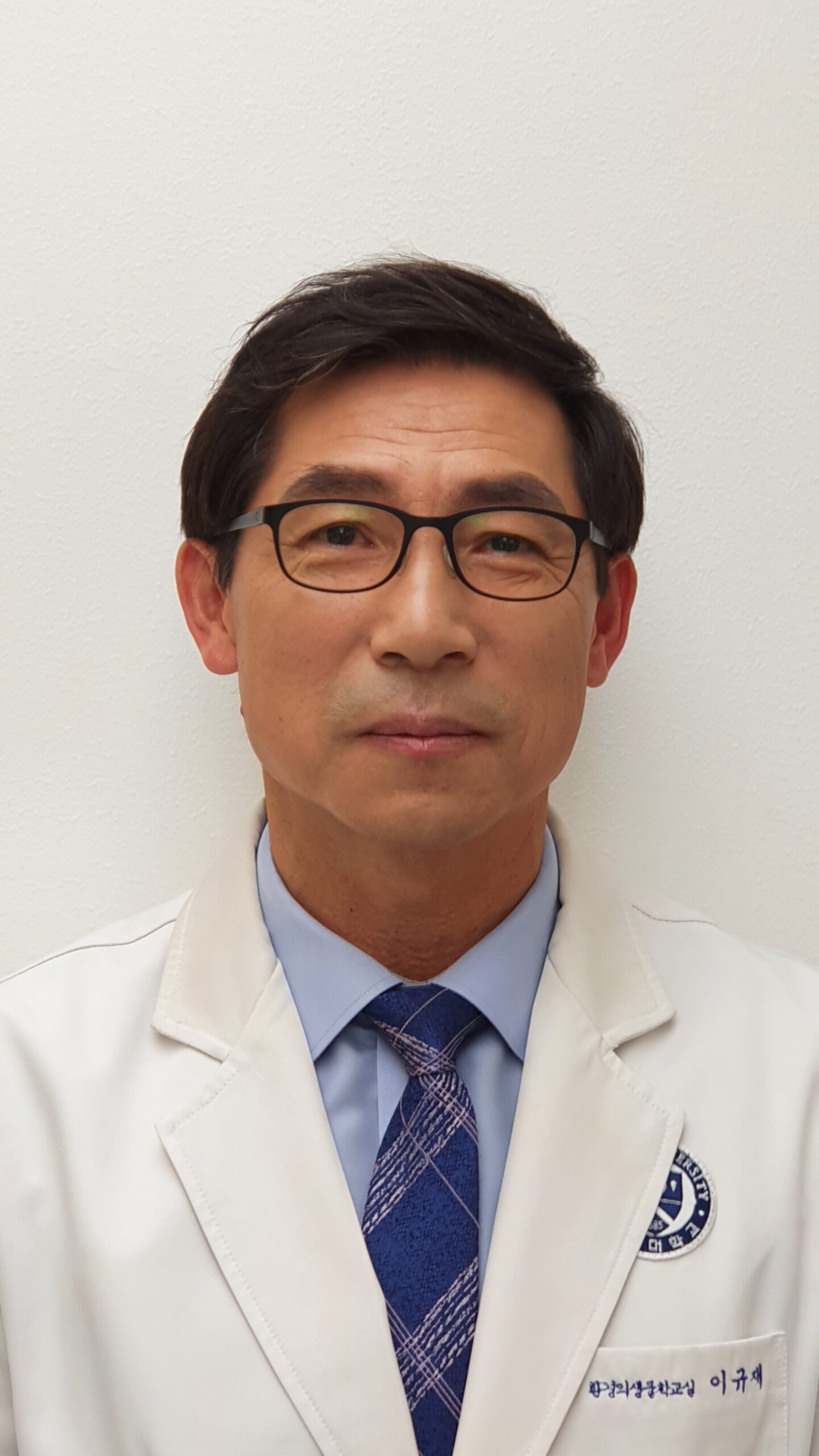
Prof. Kyu Jae Lee, M.D, PhD
Professor, Department of Convergence Medicine, Wonju College of Medicine, Yonsei University
President of Korea Water Society
While studying water with an interest in health and diseases for 30 years, Lee learned that it is necessary to change the drinking water according to the extension of life expectancy. Before the year 2015, the main concern of the millenium development goal was the management of infectious diseases with poverty problems, and chlorinated water and purified water played an important role. Since 2016, sustainable development has become the goal of the international community, and the management of life style diseases and geriatric diseases has become important. The effective water for lifestyle diseases is alkaline water, and hydrogen water getting popularity in countries where people living 100-year-old age. Hydrogen is effective in geriatric diseases, intestinal problem and beauty. The results of functional water research so far are reported as papers, and give a lecture on functional water and hydrogen at medical college and graduate universities.
Abstract
With the development of science and technology, human lifespan has increased rapidly, and technology to connect computers to the human body has advanced, establishing a new concept of lifespan. immortal. In this background, the physical theory that the human body is composed of the energy of atoms has being applied to the body. Hydrogen ion, proton and electron in hydrogen atom became energy source of living things and produce electrical gradient to product ATP in mitochondria. Until now, it has also been confirmed that electron in hydrogen atom is the main mechanism of antioxidant. Antioxidants such as vitamine C and coenzyme Q10 exhibits an ROS scavenging effect by providing electron in hydrogen. Hydrogen has advantage the smallest atom so can go whole body easily. Hydrogen is also the origin of the elements that make up the universe including human body, and it is a major substance that makes up the sun. Plants use photon energy originated from hydrogen in the sun to decompose water into oxygen and hydrogen, Animals breathe through cells with the help of plants photosynthesis, and also use hydrogen to generate energy in mitochondria. Electron in hydrogen is life-supporting energy substances, and antioxidant that promote healthy life.

Prof. Jiangang Long, PhD.
Professor and Vice Dean, Center for Mitochondrial Biology and Medicine, The Key Laboratory of Biomedical Information Engineering of Ministry of Education, School of Life Science and Technology
Prof. Jiangang Long, Ph.D., is a distinguished biology professor and the Vice Dean of the Graduate School at Xi’an Jiaotong University, where he also serves at the Center for Mitochondrial Biology and Medicine within the School of Life Science and Technology. His research is focused on aging biology, cell biology, oxidative stress, and mitochondrial metabolism, with a particular interest in mitochondrial nutrients and drug discovery. Prof. Long holds a Ph.D. in Biochemistry and Molecular Biology from the Second Military Medical University and the Chinese Academy of Sciences. His extensive work has contributed significantly to understanding mitochondrial dysfunction and its role in neurodegenerative and metabolic diseases. Prof. Long is an active researcher with numerous high-impact publications, reflecting his dedication to advancing biomedical science.
The research team has found that a variety of natural nutrients can act on different metabolic and signaling pathways of mitochondria, synergistically improving mitochondrial function, reducing oxidative damage, and preventing the occurrence and development of mitochondrial-related diseases such as neurodegenerative diseases, obesity, and diabetes. We define this type of nutrient or natural molecule as a “mitochondrial nutrient.”
In recent years, the research team has demonstrated in animal models of Alzheimer’s disease, obesity, and cardiopulmonary resuscitation that the intake of hydrogen molecules can significantly improve cognitive function in mice. In mice with fatty liver and obesity induced by a high-fat diet, the intake of hydrogen molecules significantly improves liver lipid metabolism. The ingestion of hydrogen molecules can effectively increase the success rate of cardiopulmonary resuscitation in animals with cardiac arrest. At the same time, based on clinical research evidence from multiple laboratories both domestically and internationally, we believe that hydrogen molecules can act on different metabolic and signaling pathways of mitochondria, effectively improving mitochondrial homeostasis and repairing mitochondrial function, thereby delaying or preventing the occurrence of diseases related to mitochondrial dysfunction. It is a novel type of “mitochondrial nutrient.” Hydrogen molecules can effectively regulate metabolic functions at the subcellular and cellular levels, holding significant application prospects in aging and metabolic diseases, as well as stress and metabolic disorder-related diseases.
Keywords: Mitochondria, Mitochondrial nutrients, Metabolic regulation, Alzheimer’s disease

Prof Masaru Suzuki, MD., PhD.
Professor and Director of Department of Emergency Medicine, Tokyo Dental College Ichikawa General Hospital; Special Appointment Professor of The Center for Molecular Hydrogen Medicine, Keio University
Prof Masaru Suzuki received his MD degree from Keio University in 1992. He trained in emergency medicine and internal medicine. He received his PhD in 2007. Since 2017, he has been Professor and Director of the Department of Emergency Medicine at Tokyo Dental College Ichikawa General Hospital. His research interests include sudden cardiac arrest and resuscitation science. In particular, he was the Principal Investigator (PI) of the HYBRID trial, a clinical trial investigating the use of hydrogen inhalation therapy for post-cardiac arrest syndrome. This trial attracted significant attention as it introduced a novel approach to improving recovery in patients following cardiac arrest, and marked a significant advance in the field under his leadership.
Molecular hydrogen gas (H2) inhalation has shown potential in improving neurological functions and survival in animal models of cardiac arrest (CA). However, its effects in clinical settings remain unclear. We conducted a multicenter, randomized, double-blind, placebo-controlled trial (jRCTs031180352) involving adults in a coma (Glasgow Coma Scale <8) following an out-of-hospital cardiac arrest (OHCA) of cardiac origin. Participants were randomly assigned to receive either 2% H2-mixed oxygen or conventional oxygen for 18 hours, alongside standard post-arrest care. The intervention began within 6 hours after the return of spontaneous circulation. The primary outcome was the proportion of patients achieving good neurological outcomes, defined by a Cerebral Performance Category (CPC) scale of 1 or 2, at 90 days post-randomization. Secondary outcomes included neurological outcomes assessed by a modified Rankin Scale (mRS) and the 90-day survival rate.
Due to restrictions during the COVID-19 pandemic, the trial was terminated early with 72 patients enrolled. Of these, 39 were assigned to the H2 group and 33 to the control group. All patients underwent target temperature management (TTM), with 68% receiving TTM at 33-34ºC in both groups. At 90 days, good neurological outcomes were observed in 56% of the H2 group and 39% of the control group, although this difference was not statistically significant (P=0.15). However, the H2 group showed a significant improvement in median mRS scores (P=0.01) and a higher proportion of mRS scores of 0 (46% vs. 21%, P=0.03). The 90-day survival rate was significantly higher in the H2 group (85% vs. 61%, P=0.02).
In conclusion, while H2 inhalation did not significantly improve the proportion of 90-day CPC 1 and 2, it significantly improved survival rates and neurological outcomes measured by mRS after OHCA. Further studies are needed to confirm these findings.
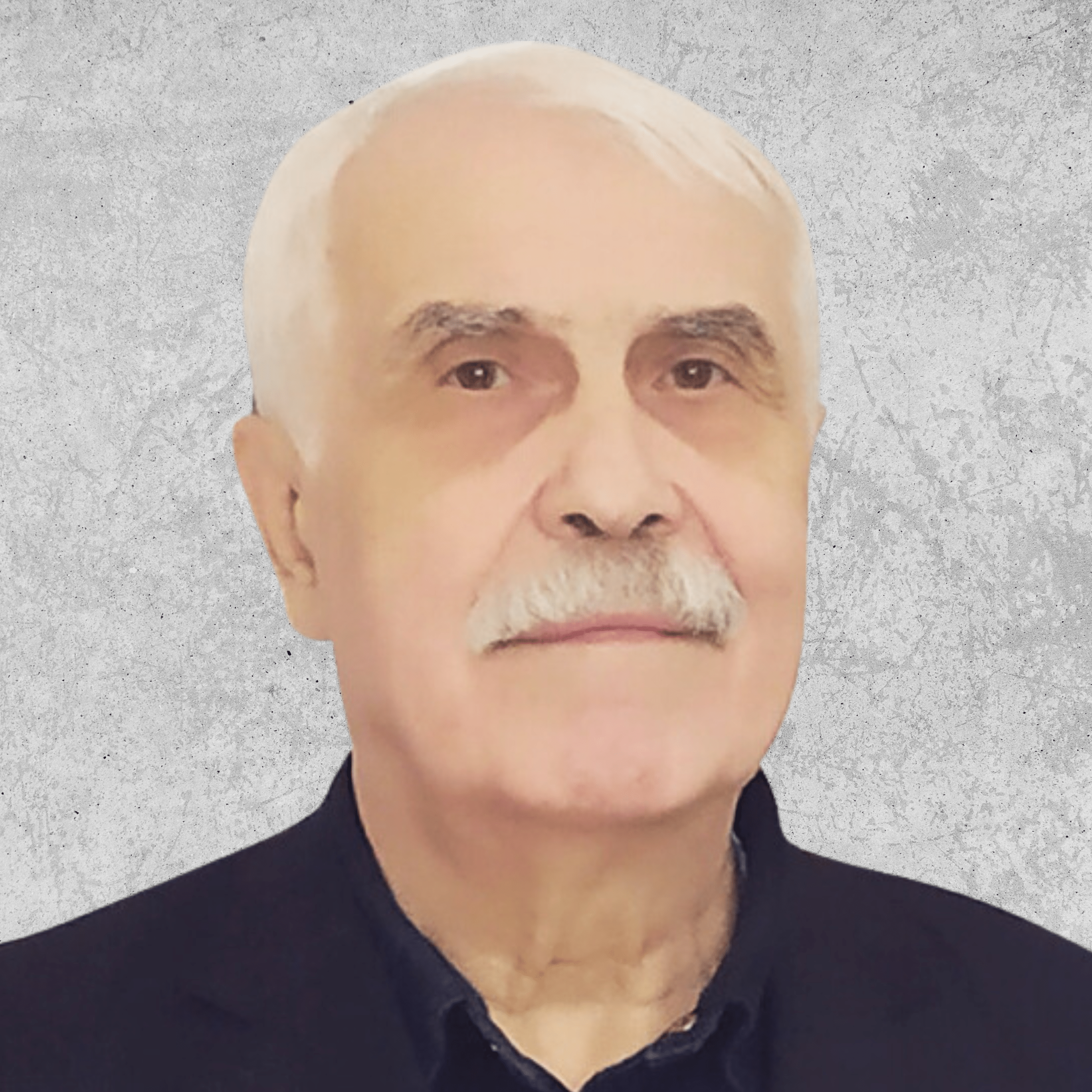
Prof. Eugene Iv. Nazarov, MSc., PhD.
Chairman,
Steering Committee of the International Association of Medical Gas Therapists;
CEO,
PE “Econika Medical Engineering”
Eugeny Iv. Nazarov, based in Odessa, Ukraine, is the President of the All-Ukrainian Association of Ozonetherapists and Executive President of the Asian-European Association of Ozonetherapists. He also serves as CEO of Econika, a private company specializing in medical and physicochemical equipment design and manufacturing. A Professor Consultant at the International Scientific Committee of Ozonetherapy (ISCO3), Nazarov holds an M.Sc. and Ph.D. from Odessa State University. With over 81 scientific articles, his research focuses on the biophysical mechanisms of drug action and ozonetherapy. Nazarov has extensive academic experience, including roles as a professor and associate professor at various Ukrainian institutions, and he has been active in the field of biophysics since 1976.
Abstract
“Medical” gases are: oxygen, ozone, hydrogen, carbon monoxide and dioxide, hydrogen sulfide, nitrous oxide, xenon and other inert gases. As their name suggests, all of these gases exhibit some form of physiological activity. There is no connection between chemical and physiological activity, which is typical for physiologically active compounds, for medical gases (MG). For example, hydrogen is an reducing agent, xenon is an inert gas, and ozone is an active oxidizing agent. At the same time, these three gases have an almost identical spectrum of pharmacological activity, which is usually explained by the presence of direct or indirect antioxidant activity of MG. This presentation proposes a different approach to understanding the physiological activity of MG, which proceeds from and organically connects two experimentally established patterns: 1) – all MG (hydrogen gas inclusive, according to the latest data) are toxicants, 2) – the pharmacological activity of MG has a nonspecific normotropic character associated with an impact on the neuroendocrine system (E. Nazarov, M. Noda, 2021). From the normotropic nature of the action and toxic properties of MG, it logically follows that their mechanism of action is associated with toxin-induced activation of the body’s homeostasis system. According to the dialectical principle of the transition of quantity into quality, it is possible to construct two series O3->H2S->CO->Xe->CO2->H2 and H2->CO2->Xe->CO->H2S->O3 linking the toxic and pharmacotherapeutic properties of MG , respectively. In other words, the greater the toxicity of a given MG, the less its own pharmacotherapeutic properties and vice versa. In accordance with this, the pharmacological systemic activity of ozone is almost completely determined by the activation of the protective homeostatic system, and the proportion of activation of the homeostatic system by hydrogen is comparatively much less expressed. The presentation discusses the practical implications of this approach, including practical recommendations for the combined use of hydrogen and some another MG.
Abstract

Dr. Dmitrii Atiakshin, MD
Research and Educational Resource Center for Immunophenotyping, Digital Spatial Profiling and Ultrastructural Analysis Innovative Technologies RUDN University
Advisor to the Rector of RUDN University, Director of the Scientific and Educational Resource Center “Innovative Technologies of Immunophenotyping, Digital Spatial Profiling and Ultrastructural Analysis (Molecular Morphology)” RUDN University, Doctor of Medical Sciences, Associate Professor
Professional skills: molecular histology, histochemistry, monoplex and multiplex immunohistochemistry, spatial phenotyping of tissue microenvironment, spatial proteomics and interactomics, cytology, transmission immunoelectron microscopy, bioinformational analysis.
Areas of scientific interest: functional morphology of the tissue microenvironment during adaptation and pathology (inflammation, oncogenesis, fibrosis); spatial profiling of the immune and stromal landscape; biology of mast cells, remodeling of connective tissue, fibrillogenesis of collagen; intercellular signaling, space biomedicine, hydrogen biomedicine, regenerative medicine.
Dihydrogen (H2) has antioxidant, anti-inflammatory and anti-fibrotic effects. In a rat model simulating pulmonary fibrotic changes induced by monocrotaline-induced pulmonary hypertension (MPH), we explored the impact of inhaled H2. The biological effects of H2 on the state of mast cells (MCs) and the parameters of the fibrotic phenotype of the local tissue microenvironment were studied. It was demonstrated that MPH resulted in the significantly increased number of MCs in both the pneumatic and respiratory parts of the lungs, an increased number of tryptase-positive MCs with increased expression of TGF-β, activated interaction with immunocompetent cells (macrophages, plasma cells), fibroblasts, and increased MC colocalization with fibrous component of the extracellular matrix of connective tissue. The alteration in the properties of the MC population occurred together with intensified collagen fibrillogenesis and an increase in the integral volume of collagen and elastic fibers of the extracellular matrix of the pulmonary connective tissue. The exposure of H2 together with monocrotaline, despite individual differences in animals, tended to decrease the size of the intrapulmonary MC population, and the decreased severity of the fibrotic phenotype of the local tissue microenvironment compared to changes in animals exposed to monocrotaline effect alone. In addition, the activity of collagen fibrillogenesis associated with MCs and the expression of TGF-β and tryptase in MCs decreased, which was accompanied by a reduction in the absolute and relative content of reticular and elastic fibers in the lung stroma. Thus, under monocrotaline exposure, inhaled H2 provides antifibrotic effects involving MCs in the lungs of rats.
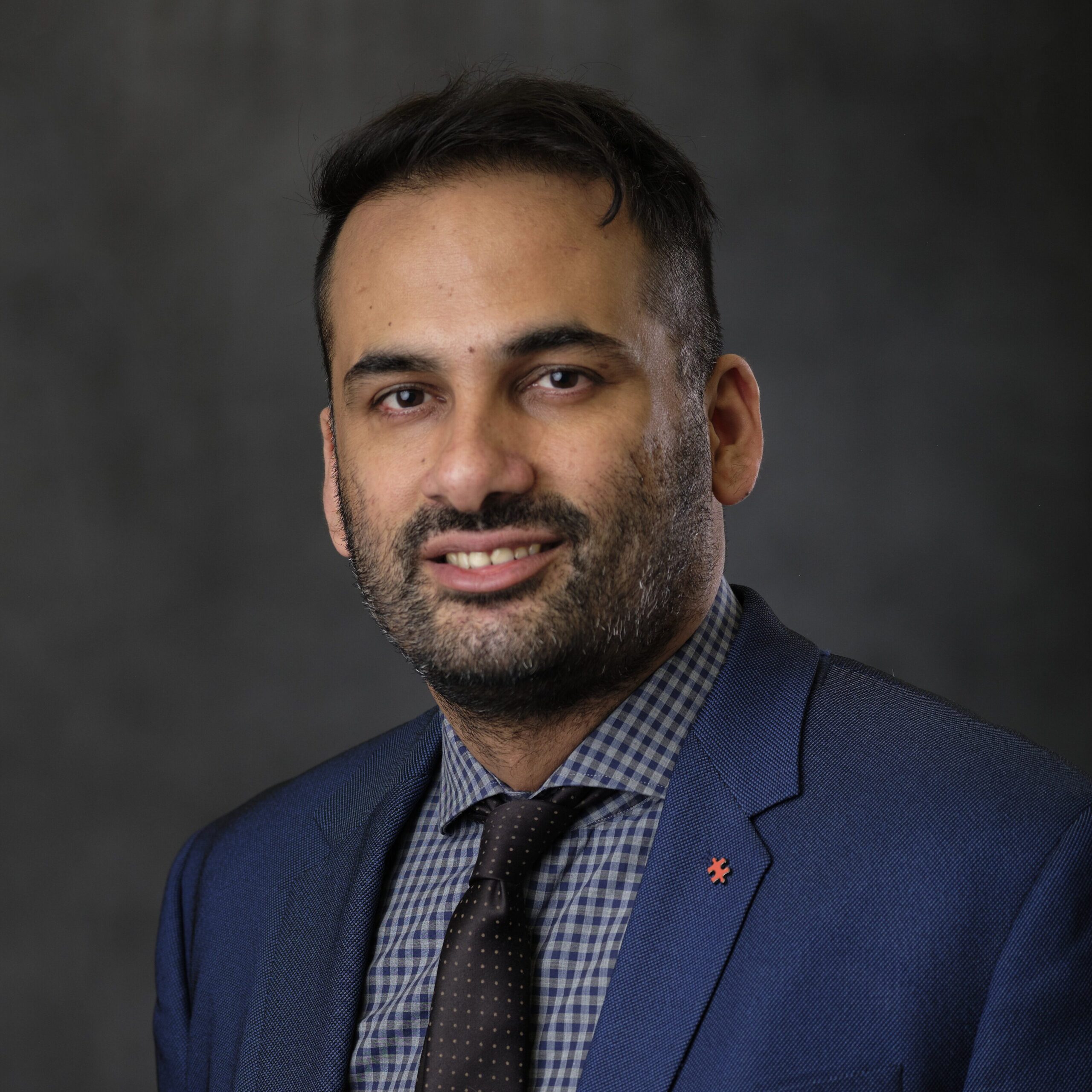
Dr. Gagandeep Dhillon, MD, MBA
Assistant Medical Director and Adjunct Assistant Professor, University of Maryland, Baltimore Washington Medical Center, Adfinitas Health
Gagandeep Dhillon, MD, MBA is a multilingual and culturally oriented board-certified physician with 10+ years of experience in the healthcare industry. He is an alumnus of the University of Tennessee where he completed the Physician Executive MBA program. He is an Assistant Medical Director and Adjunct Assistant Professor at the University of Maryland, Baltimore Washington Medical Center, Adfinitas Health. Involved in large-scale projects which seek to improve the quality and safety of care provided. Notably, he also endorses a special interest in creating a practice environment focusing on physician wellness. Moreover, Dr. Dhillon’s research interests and publications include hydrogen water, gender inclusivity, ChatGPT, and cardiovascular medicine. He has multiple peer-reviewed publications and is also on the editorial board of many journals.
Abstract
Hydrogen-rich water (HRW) has gained increasing recognition in health and wellness circles for its purported therapeutic antioxidant properties that may neutralize harmful free radicals in the body. Recent studies, conducted over the last few decades, on animals and humans using molecular hydrogen-enhanced water have demonstrated its antioxidant, anti-inflammatory, and anti-apoptotic properties. Hydrogen molecules exert significant influence over signal transduction and gene expression, suppressing pro-inflammatory cytokine production while decreasing reactive oxygen species production. We conducted a systematic review to assess the potential benefits of HRW by using its review protocol registered on PROSPERO. This review investigated the possible advantages of HRW on various health aspects, such as exercise capacity, physical endurance, liver function, cardiovascular disease risk reduction, mental health benefits, COVID-19 compliance, oxidative stress reduction, and anti-aging. Preliminary findings of clinical trials and studies were mostly encouraging; however, larger sample sizes and rigorous methodologies will likely be necessary to substantiate these initial results. Studies have not yet discovered any real risks associated with the consumption of hydrogen water. Continued scientific investigation will shine new light on hydrogen-rich water as an adjunctive therapy in the future. Growing evidence points towards the therapeutic potential of hydrogen-rich water and potential applications could even include medical therapies. As scientists and physicians, it should be our collective goal to establish therapeutic protocols and test hydrogen-rich water’s potential clinically.

Dr. Garth L. Nicolson, PhD, MD (H)
President and Chief Scientific Officer,
The Institute for Molecular Medicine
Huntington Beach, CA, USA
Professor Emeritus Garth L. Nicolson is the Founder, President, Chief Scientific Officer and Emeritus Research Professor of Molecular Pathology at the Institute for Molecular Medicine in Huntington Beach, California. He was previously the David Bruton Jr. Chair in Cancer Research and Professor and Chairman at the University of Texas M.D. Anderson Cancer Center in Houston, and he was Professor of Internal Medicine and Professor of Pathology and Laboratory Medicine at the University of Texas Medical School, Houston. Professor Nicolson has published over 700 medical and scientific papers, including editing 20 books, and he has served on the Editorial Boards of 30 medical and scientific journals and was Senior Editor of four of these. Professor Nicolson has won many awards, such as the Burroughs Wellcome Medal of the Royal Society of Medicine (United Kingdom), Stephen Paget Award of the Metastasis Research Society, U.S. National Cancer Institute Outstanding Investigator Award, the Innovative Medicine Award of Canada and the EU Academy of Sciences.
Hydrogen nanobubbles are nanometer-sized bubbles containing molecular hydrogen gas. In contrast to normal-size H2 bubbles, their half-lives can last for hours to a few days. They are prepared using electrolysis and a metallic pore conductor containing nanometer-sized holes. The nanobubbles have an average size of 70 to 120 nm as determined by light scattering and atomic force microscopy. Here we produced nanobubbles at a concentration of 3 parts H2 per billion (3 ppb) after a hydrolysis cycle and passage through a metallic net with nanometer holes. An environment of reducing potential surrounds the H2 nanobubbles. We tested the ability of H2 nanobubbles to reduce oxidative stress in organs, such as the heart. Using a Langendorff perfusion method in isolated and perfused guinea pig hearts increasing concentrations of H2 nanobubbles produced a slight decrease in contractility, while maintaining a sustained decrease in heart rate. The dose-response curve stabilized at 18 ppb. This finding is important, because cardiac reserve function is actually increased in solutions prepared with H2 nanobubbles. When hydrogen peroxide was added to media with 18 ppb H2 nanobubbles, the dose-response curve of the contractile response and the normal behavior of the heart were improved approximately ten-times in comparison to hydrogen peroxide in medium without H2 nanobubbles. This result was also reproduced in isolated cardiomyocytes. Our results show that H2 nanobubbles could be important in treating oxidative stress processes in organs such as the heart. Supported by Project p22520220100007UD 2022 to GF.
Gonzalo Ferreira1,4, Axel Santander1, Anibal Las1, Agustin Demarco1, Franco Bernech1, Luisina Chavarría1, Romina Cardozo1, Valentina Guizzo1,Milagros Benítez1, Fiorella Betancor1, Lucía Domínguez1, Nicolás Mujica1, Robert Settineri2, Garth Nicolson3,4.
1Laboratorio De Canales Iónicos y Señalización Celular, Unidad Académica De Biofísica, Facultad De Medicina, Universidad De La República, Montevideo, Uruguary; 2Sierra Research, Mission Viejo, CA, USA; 3The Institute for Molecular Medicine, Huntington Beach, CA, USA; 4Corresponding Authors: ferreira@fmed.edu.uy, gnicolson@immed.org

Prof. Oleh Pokotylo, PhD.
Ternopil Ivan Pulyuj National Technical University
Oleh Pokotylo is Doctor of Biological Sciences, Professor of the Department of Food Biotechnology and Chemistry at Ternopil Ivan Pulyuj National Technical University in Ukraine. The field of scientific interests includes the study of energy-informational, physico-chemical properties of water and the development of means to improve water quality. Professor Pokotylo is famous in Ukraine, who academically researches and popularizes hydrogen water. Published more than 200 scientific and methodical articles. He has been a member of the expert council of the Ministry of Science and Education. He work in the editorial board of the scientific journal “Medical and Clinical Chemistry”.
The aim of the study – to investigate the effect of water saturated with molecular hydrogen and 5-fluorouracil on the content of carbonyl groups of oxidatively modified proteins in the blood serum of white rats with colorectal cancer.
Material and Methods. The experiments were conducted on 50 male Wistar rats. The animals were modeled with colorectal cancer (CRC) by subcutaneous injection of 1,2-dimethylhydrazine (DMH) once a week for 30 weeks. 5-Fluorouracil was administered intraperitoneally. Animals consumed water enriched with molecular hydrogen at a concentration of 0.6 ppm ad libitum. Blood serum was used for the study, in which the content of carbonyl groups was determined by the colorimetric method.
Results. The content of carbonyl groups in the blood serum of rats with CRC treated with chemotherapy by administration of 5-fluorouracil increased 1.93 times compared to the intact group and 1.1 times compared to animals with CRC. Consumption of water saturated with molecular hydrogen 30 days after modeling CRC and administration of 5-fluorouracil to white rats led to a 1.18-fold decrease in the content of carbonyl groups in their blood serum compared to animals with CRC who were administered 5-fluorouracil but did not consume water saturated with molecular hydrogen.
Conclusions. The use of molecular hydrogen saturated water is an effective method of reducing oxidative modification of proteins in rats with colorectal cancer under 5-fluorouracil chemotherapy.
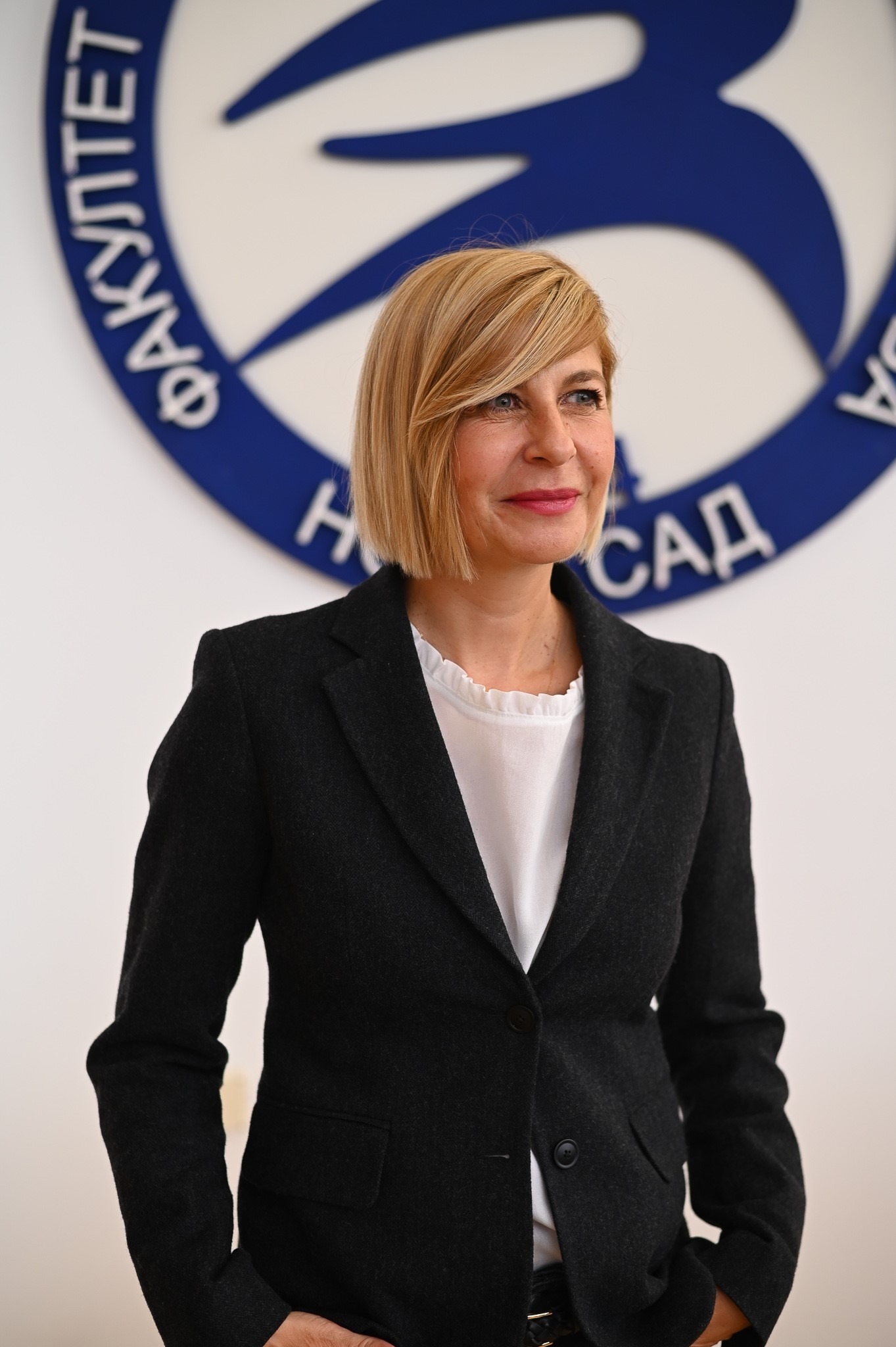
Asst. Prof Darinka Korovljev, PhD.
Applied Bioenergetics Lab,
Faculty of Sport and Physical Education,
University of Novi Sad, Novi Sad
Asst. Prof Darinka Korovljev, born in 1976, has scientific experience from working on implementing different health interventions in the aging population. She holds a Ph.D. in molecular hydrogen research from the University of Novi Sad and has a postdoctoral fellowship in the Applied Bioenergetics Lab. Dr. Darinka Korovljev manages the lab’s international projects, and she is a member of several international research teams seeking to create new pilot programs and potential curricula to improve future teaching content and educational programs in public health and healthy lifestyles in different populations. She is an assistant professor at the Faculty of Sport and Physical Education, University of Novi Sad, within the Research Methods in Physical Activity, Fitness, and Wellness subject group.
Abstract
Hydrogen inhalation therapy has emerged as a promising intervention for enhancing health and quality of life (QoL) among the elderly. This approach leverages the antioxidant and anti-inflammatory properties of molecular hydrogen (H2) to mitigate oxidative stress and chronic inflammation commonly associated with aging and age-related diseases. Preclinical and clinical studies suggest that hydrogen inhalation can improve cognitive function, reduce the risk of neurodegenerative diseases, and enhance overall physical health in older adults. The therapy appears safe and can be easily administered, making it a feasible option for the elderly population. However, while initial results are promising, further large-scale, randomized controlled trials are necessary to confirm the efficacy and establish standardized protocols for hydrogen inhalation therapy in this demographic. This review explores the potential mechanisms, current evidence, and future directions for hydrogen inhalation as a strategy to improve health outcomes and quality of life in the elderly.
Co-Authors: Sergej M. Ostojic, MD, PhD; Valdemar Stajer, PhD; Dejan Javorac, Msc, Nikola Todorović, Msc
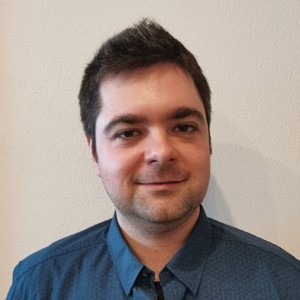
Branislav Kura, RNDr., Ph.D.
Institute for Heart Research,
Centre of Experimental Medicine,
Slovak Academy of Sciences
Dr. Kura (H-index 16) is a junior scientist at the Institute for Heart Research, Slovak Academy of Sciences and the chairman of the board of directors at European Academy for Molecular Hydrogen Research in Biomedicine, n.o. He deals with the issue of oxidative damage to the heart and failing myocardium, focusing on the mechanisms of its damage, the possibilities of prevention and treatment, and especially the use of molecular hydrogen and its mechanisms of action in biomedicine. He successfully completed a work internship under the guidance of prof. Grant Pierce at St. Boniface Albrechtsen Research Center in Winnipeg, Canada. He was awarded the “Early Carrier Investigators Competition Award” for the best lecture by a young scientist under 35 years of age, in 2018, 2022, and 2024. Dr. Kura published more than 35 scientific works that were cited more than 640 times.
Abstract
Radiation-induced heart disease (RIHD) is a known complication of mediastinal radiotherapy and involves structural and functional abnormalities of the every part of the heart. The underlying pathological mechanisms are complex and mainly related to endothelial cell damage, oxidative stress, and inflammation.
To overcome these complications, it is necessary to look for specific therapeutic interventions, which are still lacking. One of the substances with a radioprotective effect could be molecular hydrogen (H2) with its antioxidant, anti-inflammatory, and anti-apoptotic effects. H2 could be effective in alleviating RIHD through various mechanisms, e.g. selective neutralization of hydroxyl radicals, protection against inflammatory and apoptotic damage, antifibrotic and antihypertrophic effects, etc.
In this study, we show that the H2 administration to adult Wistar rats with mediastinal irradiation with a single dose of 10 Gy (4-5 Gy/min.) effectively reduces heart damage (lactate dehydrogenase), improves blood biochemical (lipid profile, albumin, alanine transaminase, aspartate aminotransferase, glucose), oxidative stress (malondialdehyde, 8-hydroxy-2′-deoxyguanosine, catalase, superoxide dismutase, uric acid), and inflammatory damage (tumor necrosis factor alpha, nuclear factor kappa B, interleukin 6) parameters. This study also reveals that more than 40 miRNAs are involved in the pathology of RIHD, mostly miRNA-30e, -126, -195, and -451a.
Based on this study, we proved that H2 administration represents promising treatment strategy for patients undergoing mediastinal irradiation. However, in order to clarify mechanism of H2 action and to verify the effectiveness of H2 therapy in clinical practice, further studies are needed, especially focused on the still unclear mechanism of its biological effect.
Grants: VEGA 2/0092/22 and APVV-19-0317.
Co-Authors: Prof. Jan Slezak, M.D., D.Sc., Patricia Pavelkova, MSc., Daria Kornieieva, Ing.
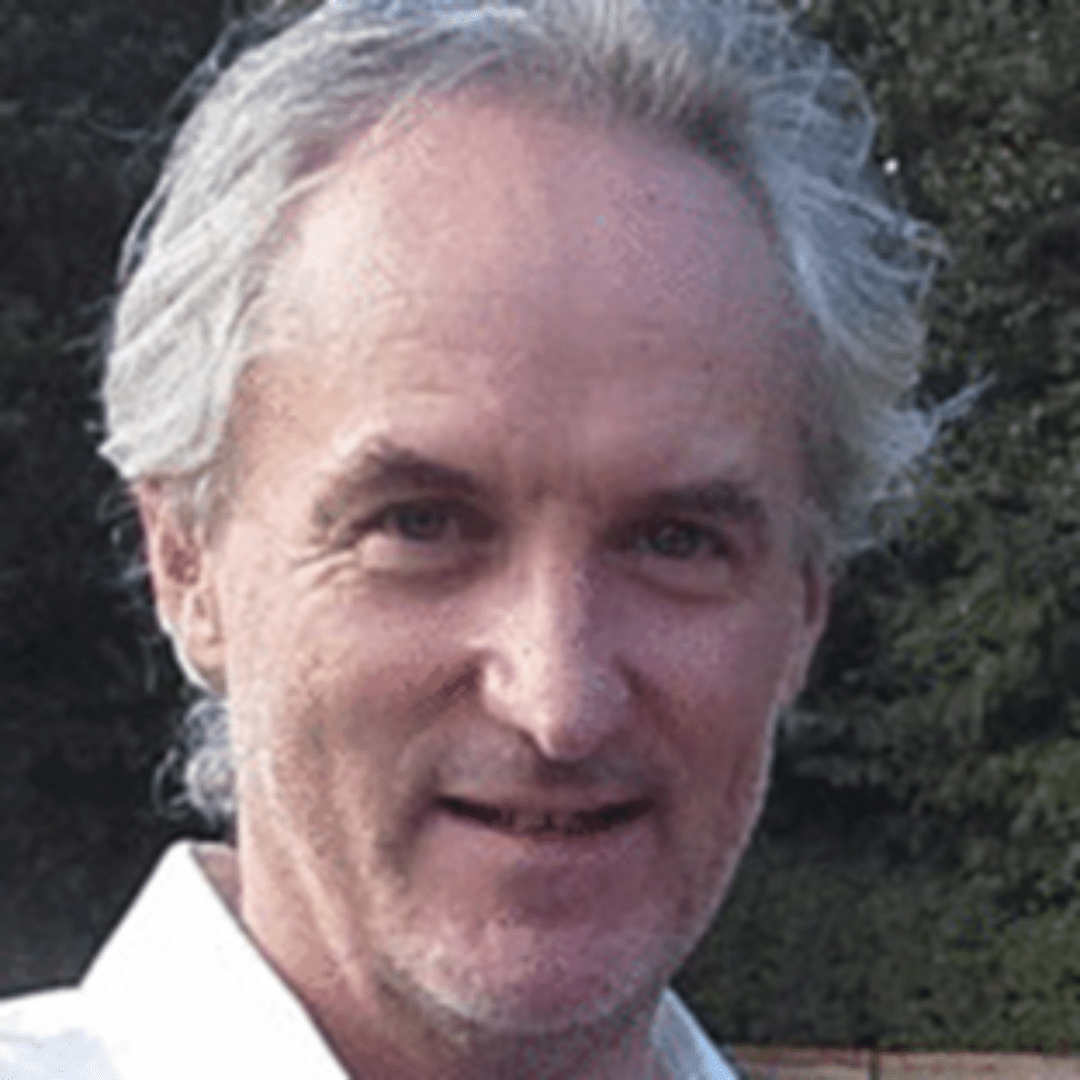
Prof. John Hancock, PhD.
Professor of Cell Signalling,
School of Applied Sciences,
College of Health,
Science and Society,
University of the West of England
John studied Biochemistry at the University of Bristol, where he stayed to obtain his PhD,
awarded in 1987. He remained at Bristol for six years as a postdoctoral researcher before
moving up the road to the University of the West of England, Bristol (UWE). There he
continued his research on the release of reactive oxygen species (ROS) in a variety of cell
types, including chondrocytes. He expanded the research into plants, focusing mainly on
Arabidopsis and peas, collaborating with Steve Neill. Further expansion of John’s interests
took him to research into nitric oxide, hydrogen sulfide and hydrogen gas signalling, and
more recently he has been writing on animal behaviour and welfare, having taken over the
chair of UWE’s ethics committee.
Treatment of many organisms with molecular hydrogen (H2) has been shown to have a beneficial effect. This is particularly true if the biological system being treated is under stress, perhaps during disease or in the presence of environmental toxins. H2 can be applied to biological systems in a variety of ways, from using the gas, hydrogen-rich water, or as nanobubbles. Regardless of the treatment regime being used, what does the H2 do to cells? In 2007, Ohta’s group suggested that H2 reacts with the hydroxyl radical which could account for the effects seen. However, H2 does not readily react with other key reactive signalling molecules, including nitric oxide radicals (NO), superoxide oxide radicals, or hydrogen peroxide. It has therefore been suggested that there may be other mechanisms involved in H2 action. Certainly, the antioxidant capacity of cells is often seen to increase after H2 treatment, and proteins such as haem oxygenase and transcription factors have altered activity. However, what is the direct action of H2? What does it react with? H2 has a mid-point redox potential, and could therefore cause reduction of biological systems. H2 also has a spin state, and therefore there is a possibility that this allows it to react with other such molecules, perhaps radicals. Proteins are known to physically interact with small inert gases, such as xenon (Xe), and it has been suggested that H2 may act in a similar manner. Time is ripe to experiment on some of these possibilities, and either rule them in or out as the direct action of H2 in biological systems.
Molecular hydrogen (H2) and its effects on biological systems has been studied since its discovery in the late 18th century. People such as Lavoisier, Priestley and Davy explored the use of a variety of gases, and mixtures of gases, on a variety of organisms, including humans. Often, they had little idea of exactly what they were using, or the dangers involved, but such work led to the characterisation of nitrous oxide, for example. This work included hydrogen gas, but this was not continued. It was not until much later that the use of H2 for diving, and then for biomedical use was mooted. However, the exact manner in which H2 interacts with biological systems is still not well characterised. It has been shown to react with hydroxyl radicals, but not other key cell signalling molecules, such as nitric oxide. Several potential mechanisms have been suggested, such as direct interaction with proteins, with haemoglobin being a model here. What seems to be consistent is that cells have increased antioxidant capacity on H2 exposure, and this suggests that treatment with H2 would be useful for biological systems that are under stress, such as during disease, or environmental exposure to toxins. Indeed, this seems to be the case, and future potential uses will be for agriculture as well as a medical therapy.

Dr. Mikhail Artamonov, MD., PhD.
Founder and President,
MJA Health Care Network
Dr. Mikhail Artamonov, affectionately known as “Dr. A.,” is a multifaceted physician dedicated to the practice of Good Medicine. With board certifications in eight medical areas, he has applied various ozone techniques for over 20 years. Dr. Artamonov, trained globally, founded the MJA Health Care Network and developed innovative treatments like 99 Body Purify Total Body Dialysis™ and Spinal Dialysis™. He graduated from Moscow Medical Sechenov Academy and Moscow University Oriental Languages Department, later studying acupuncture, herbology, and integrative medicine worldwide. He is the President of the World Congress of Intraosseous Therapy and the American Society of Medical Gases, constantly seeking new medical technologies to enhance patient care.
Abstract
Stem cell therapy has emerged as a promising avenue for regenerative medicine, offering the potential to treat a wide range of debilitating diseases and injuries. Among the various types of stem cells, mesenchymal stem cells (MSCs) have garnered significant attention due to their unique properties and therapeutic potential. In recent years, researchers have been exploring novel approaches to enhance the effectiveness of MSC-based therapies. One such approach that has gained traction is the priming of MSCs with molecular hydrogen (H₂). This article delves into the fascinating world of mesenchymal stem cell priming with molecular hydrogen and the potential benefits it holds for regenerative medicine.
Keywords: molecular hydrogen; mesenchymal stem cells; stem cell priming, regenerative medicine; tissue regeneration.

Prof. Majid Khazaei, MD., PhD.
Department of Physiology, Faculty of Medicine, Mashhad University of Medical Sciences
Dr. Majid Khazaei, MD, Ph.D, Professor of Physiology is faculty member of Mashhad University of Medical Sciences, Iran. He is working on in-vitro and in-vivo animal model of cancer, colitis, obesity, muscle atrophy, …. to find the therapeutic potential of some drugs such as hydrogen-rich water or FDA-approved drugs as drug repurposing in treatment of different diseases. You can find the detail of his publications, please follow his Scopus page.
Abstract
Introduction: Skeletal muscle atrophy is associated with poor quality of life and disability. Thus, finding a new strategy for the prevention and treatment of skeletal muscle atrophy is very crucial. This study aimed to investigate the therapeutic potential of hydrogen-rich water (HRW) on muscle atrophy in a unilateral hind limb immobilization model.
Methods: 36 male Balb/C mice were divided into control (without immobilization), atrophy, and atrophy+hydrogen-rich water (HRW). Unilateral hindlimb immobilization was induced using a splint for 7 days (atrophy) and removed for 10 days (recovery). At the end of each phase, gastrocnemius and soleus muscles weight, limb grip strength, skeletal muscle histopathology, muscle fiber size, cross-section area (CSA), serum troponin I and skeletal muscle IL-6, TNF-α and Malondialdehyde (MDA), and mRNA expression of NF-kB, BAX and Beclin-1 were evaluated. Results: Muscle weight and limb grip strength in the H2-treated group were significantly improved during the atrophy phase, and this improvement continued during the recovery period. Treatment by HRW increased CSA and muscle fiber size and reduced muscle fibrosis, serum troponin I, IL-6, TNF-α and MDA which was more prominent in the atrophy phase.
Conclusion: These data suggest that HRW could improve muscle atrophy in an immobilized condition and could be considered as a new strategy during rehabilitation.
Keywords: Hydrogen-rich water; Muscle atrophy; Immobilization; Oxidative stress
Seyedeh Elnaz Nazari1, Alex Tarnava2, Nima Khalili-Tanha1, Mahdieh Darroudi1, Ghazaleh Khalili-Tanha1, Amir Avan1, Tyler W. LeBaron3,4 , Majid Khazaei1,*
1 Metabolic syndrome Research center, Mashhad University of Medical Sciences, 2 Drink HRW, New Westminster; 3 Department of Kinesiology and Outdoor Recreation, Southern Utah University; Molecular Hydrogen Institute

Prof. Guohua Song, PhD.
Shandong First Medical University & Shandong Academy of Medical Sciences
Guohua Song, Young Taishan Scholars Scientist of Shandong Province, professor at Shandong First Medical University, supervisor for Ph.D postgraduates, Deputy director in School of Basic Medical Sciences, Shandong First Medical University. Dr. Guohua Song received her Ph.D of Medical Science from Yonsei University, South Korea. Her research focuses on lipid and lipoprotein metabolism and the application of molecular hydrogen, an emerging anti-oxidative gas. Her work has been supported by the National Science Foundation of China for 4 times, and also by the Science Foundation of Shandong Province for 2 times. She has published more than 40 SCI papers, including
Arteriosclerosis, Thrombosis, and Vascular Biology, The American Journal of Clinical Nutrition, J Clin Endocrinol Metab, Free Radi Bio Med, J Lipid Res, BBA-MOL CELL BIOL L, and Atherosclerosis. Besides, she was appointed as members of the Standing Committee of the Molecular Hydrogen Biomedicine, members of the Young Scholar Committee of Biochemical and Molecular Pharmacology, members of the Specialist Expert Committee of Molecular Hydrogen Biomedical Special fund for development. In addition, she was awarded “Science & Technology Award for Young Talents” by Shandong Province and she is one of the main candidate to receive the Award of the science and technology progress in Shandong Province. In recent years, she was invited to attend the Academic conferences at home and abroad and provide the oral presentations as the invited speaker for many times.
Background: Alcohol-induced hangover constitutes a significant, yet understudied, global hazard and a large socio-economic burden.
Objective: The aim of this study was to investigate the effects of hydrogen (H2) on relieving alcohol and hangover symptoms in 20 healthy volunteers.
Methods: In this parallel, randomized, controlled, matched, double-blinded crossover interventional trial, participants were matched into pairs and randomly assigned according to age, gender, body composition, alcohol drinking habits, and hangover frequency. Study group 1 inhaled placebo air for 1 hr, followed by drinking 100 ml of liquor (40% alcohol) within 10 min, and then drinking placebo water. Study group 2 inhaled H2 gas for 1 hr, followed by drinking 100 ml of liquor within 10 min, and then drinking H2 water. On a second intervention day (crossover) ≥1 wk later, study-group subjects were switched to the opposite order. Breath alcohol concentration (BrAC) was measured repetitively at 30-min intervals from start to 3 hrs after alcohol consumption. Plasma biochemical parameters were measured before and after the intervention. Hangover severity was assessed by survey of hangover symptoms on the day following each intervention. Cognitive testing was performed using the Vienna Test System 3 hrs after alcohol consumption. Factors associated with hangover intensity and BrAC was analyzed by multivariable linear regression.
Results: The BrACs within the H2 group were significantly lower than those within the placebo group after 30 min, 60 min, and 90 min, and the areas under the response curves revealed a positive effect of H2. Further, H2 treatment showed positive effects on hangover symptoms and VTS score. Multivariable regression analyses revealed female gender and consumption of H2 as the strongest predictors for hangover intensity and BrAC.
Conclusions: H2 relieves the symptoms of alcohol hangover.
This trial was registered at China Clinical Trial Registry as ChiCTR2200059988.
Co-authours: Xiang Lv, Yuanfeng Lu, Guoyong Ding, Xiao Li, Xinxin Xu, Aihua Zhang, Guohua Song

Prof Dr Ram B Singh, MBBS, MD, DTNH
Professor, MD, DTNH, Certified Nutrition Specialist(USA),
Halberg Hospital and Research Institute
Prof. Dr. Ram B. Singh is an esteemed expert in neuro-cardiology, chronobiology, and nutraceuticals, with significant contributions to cardiovascular science and nutritional medicine. He serves as Editor of the World Heart Journal and is an Honorary Fellow at the Halberg Chronobiology Centre, University of Minnesota. Dr. Singh has published over 750 research papers, accruing more than 18,510 citations, and authored 10 textbooks with major American publishers. He has received 12 international awards and fellowships, including recognition as one of the top four CVD scientists in India by Stanford University. As President of the Tsim Tsoum Institute and former leader of several medical societies, his work has profoundly impacted clinical practices globally.
Risk factors of hypertension and blood pressure variability are western diet, excess of salt, alcohol, tobacco, sedentary behavior, obesity, diabetes, mental disorders and sleep disorders. Mediterranean type of diets rich in fruits, vegetables, pulses and whole grains, seeds and nuts as well as physical exercise may be protective due to their beneficial effects on gut microbiota.. While western diet rich in salt and sugar, is known to cause rise in blood pressure which may be possibly, due to decreased production of hydrogen in the gut on account of lower amount of fibers in the diet. Mediterranean diet rich in vegetable, fruits and whole grain contributing high dietary fiber-induced increased production of hydrogen may cause decline in blood pressures (BPs) [1-3]. Hydrogen is potential antioxidant which is known to inhibit oxidative stress and inflammation in the body, resulting in to smooth muscle relaxation and decline in (BP) [1,2]. There is evidence that hydrogen gas reduces chronic intermittent hypoxia-induced hypertension by inhibiting sympathetic nerve activity and increasing vasodilator responses via the antioxidant effects [3]. Despite adequate knowledge of the risk factors of hypertension and excellent drug therapy available, the burden of hypertension including BP variability BPV), is increasing [4].
The global burden of hypertension in adults is estimated to be 1.13 billion [4]. Hypertension is a strong risk factor for cardiovascular disease(CVD) and chronic kidney disease, with hypertension observed in more than 80% of patients with chronic kidney disease [4,5]. BPV increases the risk of kidney damage, coronary artery diseases, retinopathy and stroke, several fold greater than hypertension alone. As high BP and BPV, accelerates the decline in renal function and promotes the development of CVDs, proper management of hypertension and BPV in patients with chronic kidney disease is of paramount importance [6,7]. Although the importance of controlling BP has been emphasized, more than 60% of patients who are hypertensive fail to adequately lower their BP to the target level and BPV continue to be present despite decline in BP [8]. Recently, Nakayama et al. developed a novel method to create an H2-enriched dialysate by reverse osmosis of H2 formed via the electrolysis of purified tap water, and demonstrated that compared to hemodialysis with standard dialysate, dialysis with H2-enriched dialysate improves BP control in patients on chronic maintenance hemodialysis [9,10]. The influence of H2 on BPs was apparent only in patients with a post-dialysis systolic BP higher than 140 mmHg [9,10]. No study has examined the effects of HRW on BP variability, although diets high in dietary fiber are known to cause a decline in BPV.The pharmacokinetics of hydrogen administration needs further research [11] because hydrogen appears to be protective against CVDs, diabetes, chronic kidney diseases as well as neurodegenerative diseases. It seems there are no clinical study to demonstrate the role of H2 in hypertension, accept those, with kidney disease. However, in patients with metabolic syndrome, HRW has been found to decrease BPs, blood glucose and total cholesterol, blood triglycerides without a decline in HDL cholesterol [13]. HRW can cause an increase in nitrite level in the blood which poses the possibility that treatment with HRW may act by increasing NO release which is known to cause vasodilation and decline in BP and possible in BPV [14-16]. Further randomized trials are necessary to provide a proof on the role of HRW in decreasing BP and BPV.
Coauthors: RB Singh, Ghizal Fatima, Germaine Cornelissen, Oleg Pokotylo, Sergej Ostojic, Oleg S Medvedev, Viliam Mojto, Tyler LeBaron, Alex Tarnava,

Prof. Youbin Wang, MD
Department of Plastic Surgery, Peking Union Medical College Hospital, Chinese Academy of Medical Science and Peking Union Medical College
Dr. Youbin Wang is a plastic surgeon and a professor of Peking Union Medical College Hospital, Peking Union Medical College &Chinese Academy of Medical Sciences. He has focused on the field of keloid more than ten years. He has developed many surgical methods in keloid treatment and raised a new concept of “keloid subepidermal microvascular network flap” based on clinical observation and experiment study. His current study activities is to explore the effects of hydrogen-rich water (HRW) on keloid treatment.
Background:
Clinical or experimental trials have demonstrated the anti-inflammatory properties of hydrogen-rich water (HRW). However, the use of HRW for keloid has not been investigated. This study explores the therapeutic potential of HRW and the underlying mechanism.
Methods:
Keloid patients indicated for two-stage operations were randomly divided into the HRW treatment group (HRW group) and the control group (Con group). The patients in the HRW group received hydrogen in their drinking water, while the Con group drank water without hydrogen. Clinical information based on patient-reported and clinical information was collected. Cytokines related to inflammation, keloid formation, and symptoms were measured using western blot (WB), RT-qPCR, and ELISA before and after the interventions.
Results:
Through the patient’s subjective assessment, a lower frequency of pain and pruritus was reported after HRW treatment. The WB and qPCR results consistently confirmed that the expression of pruritus-related cytokine, transient receptor potential vanilloid type 1 (TRPV1), was significantly decreased after HRW. Besides, the WB and ELISA analysis indicated that the anti-inflammation cytokine interleukin-10 (IL-10) levels significantly increased after HRW therapy. The WB analysis indicated that the levels of inflammation cytokine, including vascular endothelial growth factor (VEGF) and transforming growth factor-β (TGF-β), were significantly decreased after HRW therapy.
Conclusion:
These findings indicate that HRW therapy is a potentially attractive therapeutic option for keloid to relieve pain and itching and promote the resolution of inflammation.
Co-authours: Dr. Xinwen Kuang; Dr. Zhengyun Liang
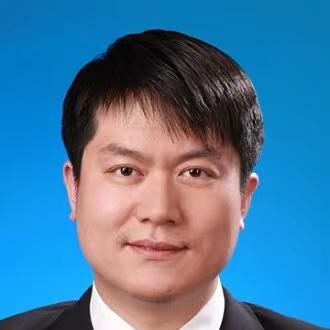
Prof. Wanchao Yang, MD., PhD.
Chief Physician, Professor, Director of Anesthesiology
The Sixth Affiliated Hospital of Harbin Medical University
I’ve been devoted to the research of mechanisms and applications of therapeutic medical gas for organ protection for many years. My team conducted research on the effect of hydrogen inhalation in TBI rats funded by Postdoctoral Science Foundation of China and discovered that inhalation of a high concentration of hydrogen significantly improved neurological function scores, reduced postoperative cerebral oedema and pathological damage and neuronal apoptosis in rat brain tissue, and promoted neurological recovery. The underlying mechanism included the alleviation of oxidative stress and anti-inflammation. Results were published at Brain Research (IF: 3.610), Neural Regeneration Research (IF: 5.132) and European Journal of Pharmacology (IF: 5.195).
Microglia-associated neuroinflammation plays a crucial role in secondary brain injury after traumatic brain injury (TBI). Studies have shown that HDAC inhibitors exert neuroprotective effects by inhibiting neuroinflammation. Although Molecular hydrogen (H2) was previously discovered to modulate gene expression via histone modifications, the specific mechanism by which H2 regulates HDAC is unknown. Therefore, we sought to determine whether H2 would preserve secondary injury of TBI by inhibiting HDAC. In the present study, TBI was induced using a fluid percussion injury model. H2 inhalation conferred an improved neurological outcome after TBI by significantly decreasing neuroinflammation and activating microglial M2 polarization via inhibition of histone deacetylase 5 (HDAC5) expression. Furthermore, an AMPK inhibitor activated expression of HDAC5 and downstream GSK3β/AKT signaling; H2 treatment reversed these effects and rescued neurological function in vitro and in vivo. Mechanistically, H2 down-regulated GSK3β histone H3 deacetylation levels through AMPK activation. Altogether, these data indicate that molecular hydrogen inhibits neuroinflammation and rescues neurological function after TBI by promoting M2 polarization of microglia through GSK3β/AKT signaling and AMPK-dependent mediation of HDAC5. Our findings reveal novel targets for inhibiting neuroinflammation, and highlights the potential of H2 therapy for TBI.
Co-authors: Tingting Li, postdoctoral researcher; Xin Zhang, master student; Tianwei Tang, master student; Xiangnan Liu, master student; Yi Yang, master student; Wanchao Yang, corresponding author

Prof. Li Ge, PhD.
School of Clinical and Basic Medical Sciences, Shandong First Medical University & Shandong Academy of Medical Sciences
Dr. Li Ge is a professor from Clinical and Basic Medical Sciences, Shandong First Medical University & Shandong Academy of Medical Scicences, China. Her research focuses on the intestinal mucosal immunity and microecology. She has pioneered a unique research field of “Microbial hydrogen economy manipulating intestinal homeostasis”, and has published representative papers on leading journal Gut Microbes and Frontiers in Immunology. She has participated in International Congress of Mucosal Immunology (ICMI2019), 17th International Congress of Immunology (IUIS 2019), and AAI-IMMUNOLOGY 2020, and her conference papers have been published in the European Journal of Immunology and the Journal of Immunology.
Among the high therapeutic efficiency and biosafety of gas-involving theranostics popular in recent years, hydrogen medicine has been particularly outstanding because hydrogen gas (H2), a microbial-derived gas, has potent anti-oxidative, anti-apoptotic and anti-inflammatory activities in many disease models. Studies have demonstrated that exogenous H2 treatment alleviates experimental colitis, however, the underlying mechanism remains poorly understood. In this study, we found that administration of hydrogen-rich saline (HS) ameliorated dextran sulfate sodium (DSS)–induced acute colitis in a mouse model, as documented by inhibiting weight loss, colonic shortening, local elevated levels of proinflammatory cytokines and intestinal mucosal injury. Furthermore, we demonstrated that HS administration can increase the abundance of intestinal-specific short-chain fatty acid (SCFA)–producing bacteria and SCFA production, thereby activating the intracellular butyrate sensor peroxisome proliferator–activated receptor γ signaling, consequently promoting the recovery of the colonic anaerobic environment. In addition, we indicated that HS administration ameliorated intestinal barrier functions by modulating specific mucosa-associated mucolytic bacteria, leading to substantial inhibition of opportunistic pathogenic Escherichia coli expansion as well as a significant increase in the expression of interepithelial tight junction proteins in mice with colitis. Exogenous H2 reprograms colonocyte metabolism by regulating the H2–gut microbiota–SCFAs axis and strengthens the intestinal barrier by modulating specific mucosa-associated mucolytic bacteria, wherein improved microbial hydrogen economy alleviates colitis. Although we are now starting to understand the underlying mechanism, there are some limitations in this study. Microbiome manipulations, nanomedicine with intestinal-targeted release of hydrogen and clinical validation need to be explored urgently.
Co-authours: Jie Qi, Bo Shao, Zhenzhen Ruan, Yueran Ren, Shujing Sui, Xinpei Wu, Xueqiang Sun, Shuman Liu, Sha Li, Changqing Xu, Wengang Song
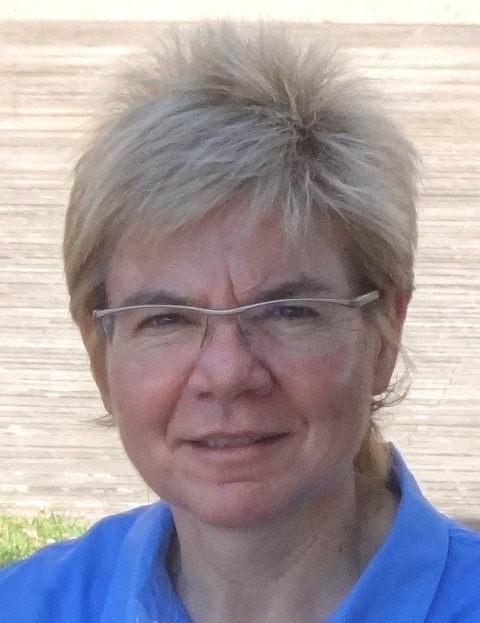
Dr. Olga Pol, PhD.
Molecular Neuropharmacology Group, Sant Pau Research Institute and Autonomous University of Barcelona
Dr. Olga Pol is coordinator of the Molecular Neuropharmacology Group at the Sant Pau Research Institute and at the Neurosciences Institute of the Autonomous University of Barcelona, Spain. She is editor of the journal Antioxidants and a member board director of the European Academy for Molecular Hydrogen Research in Biomedicine. Her research focuses on the investigation of new strategies for the treatment of chronic pain and the emotional/cognitive disorders associated, and in the search of novel approaches to improve the antinociceptive actions of conventional analgesics. Her investigations reveal the analgesic, anxiolytic and/or antidepressant properties of molecular hydrogen, carbon monoxide and hydrogen sulfide in different pre-clinical models of chronic pain as well as their capacity to improve the analgesic effects of opioids and cannabinoids during chronic pain.
Chemotherapy-associated neuropathic pain (CIPN) is a major unpleasant effect resulting from this treatment in cancer patients. Patients undergoing chemotherapy also develop other signs, such as anxiety, depression, muscle wasting, cognitive deficits and/or body weight loss that have a significant negative impact on the well-being and quality of life of patients and may even lead to the need for adjournment of the chemotherapy. In addition, therapies to treat or prevent this type of pain such as anticonvulsant, antidepressant, and non-steroidal anti-inflammatory drugs are not completely effective and produce significant side effects. The protective actions of molecular hydrogen (H2) in many neurological disorders have been described, but its effects on CIPN are lesser known. In this talk, we will speak about the effects of systemic treatment with hydrogen-rich water (HRW) on (i) the mechanical and thermal allodynia provoked by chemotherapy; (ii) the memory deficits, anxiety- and depressive-like behaviours associated with CIPN; (iii) the main pathways involved in these effects and (iv) the impact of sex on these actions, in two preclinical models of CINP in mice. Our results reveal that therapeutic and prophylactic treatment with HRW inhibits and prevents the onset of allodynia, functional dysfunctions and mood impairments resulting from the chemotherapy induced by paclitaxel and cisplatin in both sexes. These effects are principally mediated by modulating the plasticity, inflammatory and oxidative responses provoked by these chemotherapeutic agents in the peripheral and central nervous system of these animals. These studies propose the use of HRW as an effective and safe therapy for CIPN and its associated cognitive and emotional deficits.

Prof. Dr. Shaoqing Yu, PhD.
Department of Otolaryngology, Tongji Hospital, School of Medicine
I am currently the Director of the Department of Otolaryngology Head and Neck Surgery and Allergy at Tongji Hospital. I am a member of the European Society for Allergy and Immunology (EAACI), a member of the Chinese Association of Traditional Chinese and Western Medicine Otolaryngology Sciences, et al. Has undertaken more than 20 research projects, including the National Natural Science Foundation of China. Published over 60 papers in renowned top journals in allergy immunology, such as Allergy and Clin Rev Allergy Immuno. Long term commitment to basic and clinical research on allergic rhinitis: systematically conducted research on the regulation of medical gas signals in allergic rhinitis, proposed the use of exhaled NO and CO levels for auxiliary diagnosis of AR, and invented a new treatment method of nasal lavage with hydrogen rich saline; Established the Shanghai Municipal Health Commission’s Center for the Promotion, Application, and Standardized Management of allergen Specific Immunotherapy for Allergic Rhinitis, and carried out immunotherapy using stem cells and exosomes for allergic rhinitis; Led the completion of three expert consensus/guidelines for surgical treatment of allergic rhinitis, and participated in the 15 expert consensus/guidelines. I have won the third prize of Shanghai Medical Technology Award, the third prize of Military Medical Achievements Award, Tongji University Taihe Medical Education Award, and more than 20 personal patents, and have been selected for the Shanghai Oriental Talent Program.
The incidence rate of allergic rhinitis(AR) in China is as high as 5% -15%, and has a trend of increasing year by year. There is no more effective treatment for AR except traditional antihistamine, hormone and other treatments that mainly control symptoms. Based on the fact that oxidation is the fundamental pathological state of cells, oxidative damage is also an important pathogenic basis for AR. The new medical gas H2 is an important selective antioxidant molecule discovered in recent years. We have found in animal experiments that H2 has a modulatory effect on AR inflammation. H2 achieves antioxidant effects by directly neutralizing free radicals and indirectly increasing SOD levels. H2 induces the expression of transcription factor FOXP3, increases the number of T regulated cells(Treg) , reverses Th1/Th2 balance, and inhibits allergic inflammatory response. H2 inhibits inflammatory factors such as IL-4 and IL-13, and upregulates inhibitory factors such as TGF and IL-10 to alleviate mucosal inflammatory response. H2 alleviates and inhibits allergic inflammation of the nasal mucosa through the possible mechanisms mentioned above, thereby controlling or alleviating the symptoms of AR. Than, we conducted clinical researchh, hydrogen rich saline(HRS) were made as nasal lavage solution. The administration method through irrigation can directly act on the target organs of the nasal mucosa, rapidly exerting antioxidant and anti-inflammatory effects. A total of 120 patients with AR were randomly divided into two groups, patients irrigated with HR (HRS group) and the control group irrigated with saline (NS group). A randomized, double-blind control study was performed. The main observation index in this study was the total score of nasal symptoms (TNSS). In addition, eosinophilic protein (ECP) of the nasal secretions, nasal nitric oxide (nNO) levels, and levels of regulatory T cells (Treg) and regulatory B cells (Breg) were also compared between the two groups.After 30 days of Irrigating nasal cavity with HRS, TNSS and nasal ECP in the two groups decreased significantly (P<0.05), with patients in the HRS group showing significantly lower levels compared to the NS group (P<0.05) . AR patients showed significant improvement in nasal comfort, reduced nasal secretions, and significantly restored ciliary clearance function. Its effective rate reached 86.7%, with no adverse reactions. Due to its safety and effectiveness, it has been promoted and recognized by multiple hospitals.
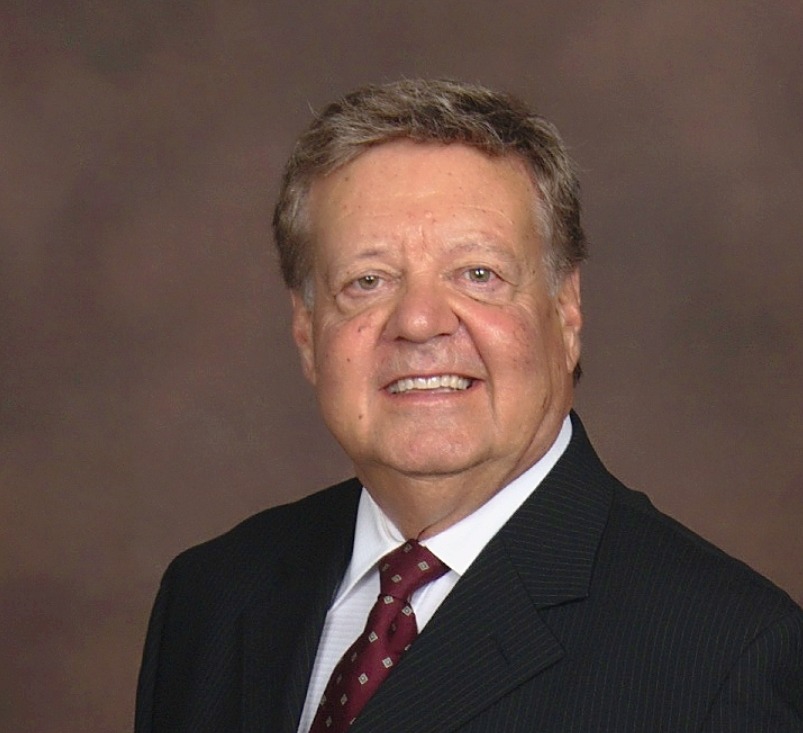
Bob Settineri, MS.
CEO and
Research Director,
Sierra Productions Research
Bob has over 30 years of experience in biomedical research which led to 64 scientific publications. He is a consultant for pre-clinical/clinical research and product development.
Bob has 9 patents for natural dietary supplements. He also writes, produces, and directs medical educational videos & films which received 37 international awards. These films were translated into 8 languages and
distributed in 80 countries.
Bob is the author of the book entitled Live Healthier Better and Longer with Hydrogen (H2.)
Molecular hydrogen (H2) is emerging as a groundbreaking therapeutic agent with profound health benefits. This presentation will explore the multifaceted roles of H2 in promoting optimal health and preventing disease. With its unique properties as a selective antioxidant, H2 can neutralize harmful free radicals, reducing oxidative stress and inflammation—a key factor in many chronic conditions. Research has shown that H2 has therapeutic potential in treating diseases such as diabetes, cardiovascular disorders, neurodegenerative diseases, and more.
Attendees will gain insights into the mechanisms by which H2 operates at the cellular level, enhancing mitochondrial function and protecting against cellular damage. We will also discuss the latest clinical studies demonstrating H2‘s efficacy and safety. Furthermore, the presentation will highlight practical applications of H2 in clinical settings and everyday wellness.
Join us for an engaging session that promises to revolutionize your approach to patient care with this safe, natural, and effective intervention. Discover how integrating molecular hydrogen into clinical settings can lead to better health outcomes and improved quality of life for patients. Don’t miss this opportunity to stay at the forefront of medical innovation and unlock the therapeutic potential of H2.
Have you ever wondered if there’s a secret ingredient to staying healthy and feeling great? Imagine if the smallest molecule in the universe could make a big difference in your life. Welcome to the amazing world of molecular hydrogen (H2)! This tiny but mighty molecule can help protect your body from harmful substances, boost your energy, and even make you feel younger. In our exciting presentation, we’ll explore how H2 works its magic inside your body, making you stronger and healthier. Come join us to learn about this incredible molecule and find out how it can help you live your best life! Get ready to be amazed by the power of hydrogen!

Grace Russell, MSc., PhD.
University of the West of England
Grace Russell is a driven and accomplished researcher specializing in Biomedical Sciences,
with a particular focus on molecular hydrogen and oxyhydrogen gases. She graduated from the University of the West of England (UWE) in 2020, earning her MSci degree with distinction. Currently, Grace is immersed in her doctoral research at UWE, exploring the effects of these gases, with plans to graduate Summer 2024.
Grace’s academic journey is marked by excellence and dedication. Despite being early in her career, she has already made significant contributions to the field. Grace’s scholarly
prowess is evident from her numerous publications in esteemed peer-reviewed journals.
Beyond her research, Grace is passionate about advocating for intersectional representation
and ensuring that voices from diverse backgrounds are heard and valued in the scientific community.
According to clinical and empirical data, molecular hydrogen (H2) and oxyhydrogen (66% H2/ 33% O2) gases can remediate the effects of numerous diseases in adults. By acting as an anti-inflammatory and antioxidative agent, it is reported that H2 administration can improve recovery through mitigating the hyperinflammatory response and reducing oxidative stress.
As the precise mechanisms of H2 activity are currently undefined, the lack of primary target identification, coupled with difficulties regarding administration methods (e.g., dosage and dosage frequencies, and long-term effects of treatments), there is a requirement for further research to evidence how H2 can reasonably and effectively be incorporated into healthcare.
To better understand the molecular mechanism(s) behind the activity of H2, and to ascertain whether H2 can be utilised as an effective nutraceutical, this short series of videos investigates the modality and effects of H2 using a range of bioinformatical, theoretical and empirical approaches.

Prof. Oleg S. Medvedev, MD, PhD
Department of Pharmacology, Faculty of Fundamental Medicine, Lomonosov Moscow State University
Oleg Medvedev graduated from the School of Medicine in Leningrad, USSR. Defended PhD degree in pharmacology in 1972 and degree Doctor of Science in 1984 in Moscow. 1979-1982-Senior scientific researcher at the Institute of Pharmacology, Moscow, 1982-1992 worked as head of laboratory of experimental pharmacology at the National Cardiology Centre, Moscow. Since 1992 to present time -Chairman of Pharmacology Department at the Lomonosov Moscow State University. Author of more than 220 scientific papers cited in PubMed.
Fields of interest: experimental models of cardiovascular and metabolic diseases, antioxidants, CoQ10, molecular hydrogen, gut microbiota biomarkers, methods of breath analysis.
Hydrogen-rich water (HRW) is widely used to deliver molecular hydrogen as a therapeutic antioxidant. It has been shown that hydrogen (H2) in this case is absorbed into the blood in the stomach and upper part of the small intestine, passes through the portal vein to the liver and is exhaled in the lungs. The peak concentration of H2 in the blood and exhaled air is observed at 10-15 min and decreases to the initial level at 45-60 min. By comparing the amount of H2 in the drunk HRW with the amount of H2 released with the breath, it is possible to estimate the consumption of H2 in the human body (Shimouchi et al., (2012). In their study, it was shown that the body (mainly the liver) consumes about 40% of the H2 ingested with HRW. Unfortunately, the approach proposed by Shimouchi et al. is rather time and labour consuming.
In our study we used H2 and methane (CH4) rich water with 10g of lactulose in human volunteers and measured concentrations of H2, CH4, O2, 12CO2, 13CO2, NH3, H2S in real time (every 1 s) on the breath using multi-channel tunable high-resolution diode laser spectrometer, developed by Y.Ponurovskii2 and co-workers at the General Physics Institute of the Russian Academy of Sciences, named after the Nobel Prize winner (1964) Alexander Prokhorov. The concentration curves during the first 40-50 min reflect the kinetic H2 and CH4 absorbed from the HRW, while the curves after 60-70 min reflect the production of these gases by the gut microbiota induced by lactulose fermentation. The kinetics of H2 and CH4 from HRW helps to better understand the kinetics of the same gases produced by the gut microbiota using the same pathway through the portal vein and liver to reach the lungs. Taking into account the differences in molecular mass and diameter of H2 and CH4, we are evaluating the possibility of using such an approach for estimating an important parameter such as the wall permeability of the upper part of the gastrointestinal tract.
Co-authors: Yakov Y. Ponurovskii2, PhD, Dmitrii Stavrovskii 2 , PhD
Abstract
The antioxidant effect of H2 depends on its concentration in the blood, irrespective of its exogenous (hydrogen-rich water) or endogenous (gut microbiota) origin. The production of endogenous H2 and CH4 depends mainly on the fermentation of carbohydrates by the gut microbiota and its bacterial composition. It is known that almost 60% of the bacteria in the microbiota can produce H2, while CH4 is produced exclusively by the microorganisms known as Archaea. Archaea use 4 molecules of H2 to synthesize one molecule of CH4. As a result, the more Archaea present in the human gut microbiota, the higher the level of CH4 in the gut and the lower the level of H2. Many studies have shown that 30 to 50% of healthy people are high methane producers and low hydrogen producers. The percentage of methane producers increases with age. This means that people with high methane-producing gut microbiota have a weaker defense against oxidative stress and a higher risk of developing inflammation and most non-communicable diseases – cardiovascular, endocrine or cancer. Public health guidelines recommend increasing the consumption of dietary fiber, which increases the production of H2 by the microbiota and improves antioxidant defenses. Unfortunately, in high-CH4 producers this does not work because all the H2 produced is consumed by methanogenic Archaea right in the gut and the level of H2 in the blood does not increase. In conclusion, we provide our own and clinical data to support this hypothesis and strongly recommend the use of hydrogen-rich water or H2 inhalationsto combat oxidative stress in high methane producers.
Co-authors: Yakov Y. Ponurovskii2, PhD; Anastasia Yu.Ivanova1, Filipp I. Romanikhin1
1Department of Pharmacology, Faculty of Fundamental Medicine, Lomonosov Moscow State University, Moscow, Russia; 2Prokhorov General Physics Institute of the Russian Academy of Sciences, Moscow, Russia

Barbora Kaločayová, PhD.
Centre of Experimental Medicine, Slovak Academy of Sciences, Institute for Heart Research
MSc. Barbora Kalocayova, PhD. is a scientist in the Slovak Academy of Sciences in Bratislava investigating the pathology and treatment of various cardiovascular diseases and, at the same time, works as an assistant professor at the Faculty of Pharmacy of the Comenius University in Bratislava, Slovakia. She is experienced in the measurement of enzyme kinetics, Western blot, q-PCR methods, work with laboratory animals, drug application, cell isolation, and others. Dr. Kalocayova successfully participated in COST projects (CA16225: EU-CARDIOPROTECT, CA17129: EUCardioRNA). She participated in the foreign research stays at Semmelweis University, Budapest, Hungary, and at the Luxembourg Institute of Health in Luxembourg. She is currently engaged in biomedical research of H2 in conditions of increased production of free oxygen radicals (radiation model: rats, model of simulated heart transplantation: pigs).
Cardiac surgery-associated acute kidney injury (CS-AKI) is a common postoperative complication following cardiac surgery. Since oxidative stress is hypothesized to be one of the causes of CS-AKI, molecular hydrogen (H2) supplementation has been proposed as a promising antioxidant for CS-AKI prevention. Our study was performed on an in vivo model of simulated porcine heart transplantation. We used 2 experimental groups: T-pigs after transplantation, and TH-pigs after transplantation treated with gaseous 4% H2 (during inhalation of anesthesia and throughout oxygenation of blood in extracorporeal circulation). The levels of creatinine, urea, and phosphorus were measured in plasma. Renal tissue samples were analyzed by Western blot method (Nrf2; Keap-1; SOD) as well as by measuring the activity of Na/K-ATPase. After cardiac surgery selected plasma biomarkers were elevated. The use of H2 was followed by the normalization of all these parameters. Our results suggest activation of the Nrf2/Keap1 pathway as well as increased SOD expression in the H2-treated group. Regarding Na/K-ATPase, we detected a decrease of activity in the TH group. Our results support the effectiveness of H2 supplementation in CS-AKI, especially in terms of normalization of plasma biomarkers to control levels. The protective effect of H2 might be linked to its activity against oxidative stress via Nrf2/Keap1 pathway modulation and associated overexpression of the antioxidant enzyme SOD. H2 treatment resulted in decrease of renal Na/K-ATPase activity indicating reduced sodium reabsorption, which appears to be a novel regulatory mechanism of an important membrane transporter during CS-AKI in the H2-treated pig model. Funding:APVV-19-0317, 2018/7838:1-26C0, 2019/4-CEMSAV1,VEGA2/0092/22, 2/0148/22.
Co-authours Details: Barbora Kalocayova1,5, Branislav Kura1, Jana Vlkovicova1, Denisa Snurikova1, Norbert Vrbjar1, Karel Frimmel1, Vladan Hudec2, Matej Ondrusek2, Ivo Gasparovic2, Rastislav Sramaty2, Jaroslav Luptak2, Michal Hulman2, Tyler W. LeBaron1,3,4 and Jan Slezak1
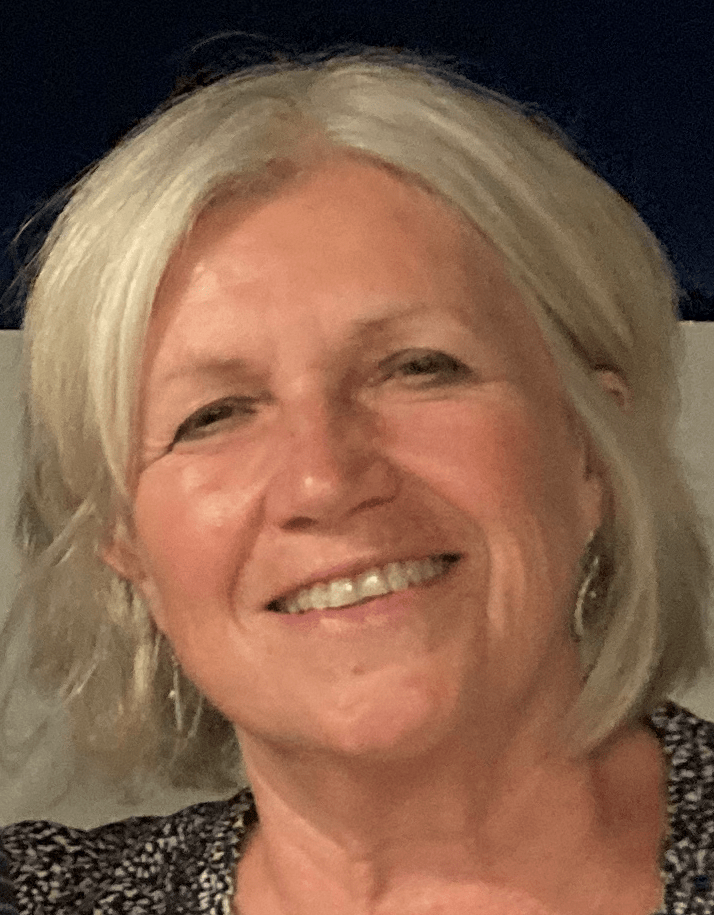
Prof. Svetlana
N. Radyuk, PhD.
Research Associate Professor, Department of Biological Sciences, Southern Methodist University
Dr. Svetlana Radyuk is an Associate Research Professor at Southern Methodist University with over two decades of experience in biomedical field. She received her MS in Chemistry from Lomonosov Moscow State University and her PhD in Biological Sciences. Her research, supported by NIH grants, focuses on the role of redox signaling in aging, disease, circadian clocks, immunity, and currently on the role of molecular hydrogen in aging and neurodegenerative diseases. She has also served as an editor and reviewer for leading journals and has been invited to present her research at numerous international conferences and seminars.
Abstract
Aberrant redox-sensitive reactions and oxidative damage contribute to various pathologies and accelerated aging. While effective interventions are limited, emerging evidence suggests that hydrogen gas (H₂) has significant therapeutic potential as an antioxidant, anti-inflammatory agent, and signaling molecule. However, its protective mechanisms remain unclear.
In this study, we used the Drosophila model to assess the effects of orally administered H₂ on physiological fitness, health span, and survival in mutant flies underexpressing mitochondrial redox-regulating enzymes, peroxiredoxins (Prx). H₂ treatment significantly improved locomotor activity, suggesting its importance in maintaining motor neuronal function. Notably, flies underexpressing Prx in motor neurons exhibited phenotypes similar to those in Drosophila models of neurological disorders, including amyotrophic lateral sclerosis (ALS). Both Prx mutant and ALS flies showed shorter lifespans, impaired locomotor activity, and a shift towards a pro-oxidative state. H₂ treatment enhanced locomotor activity in ALS flies but did not affect SOD1 enzyme activity, with differential effects on lipid peroxidation.
‘Omics’ analyses revealed that H₂ influenced gene expression and metabolism, particularly in immune response, inflammation, protein misfolding pathways, and proteolysis. Metabolomic analysis showed alterations in amino acid, lipid, sugar, and redox molecule metabolism, with significant sex dimorphism.
Additionally, we developed an H₂-generating device that effectively treated inflammatory skin diseases in a mouse model, reducing oxidative damage and inflammation. This dual approach highlights H₂’s therapeutic potential in treating neurological and inflammatory disorders, including ALS and atopic dermatitis.
Coauthors:
Zhihao Wu, PhD, Assistant Professor
at Southern Methodist University; Yinglu Tang, a PhD student in Dr. Wu’s lab; Jeffery
Bolte, former undergraduate student and Research Assistant in Dr. Radyuk’s lab,
currently medical student at the University of Texas Health Science Center San
Antonio and a Researcher at Texas Diabetes Institute; Vladimir Klichko, PhD., Senior
Research Associate at Southern Methodist University (retired); Daniel Crow, former
MS student at Southern Methodist University, currently at Hyderm Innovations,
Inc.

Dr. Seyedeh Elnaz Nazari, PhD.
Researcher, Mashhad University of Medical Sciences
Dr. Seyedeh Elnaz Nazari, Ph.D. in Medical Physiology is a researcher at Mashhad University of Medical Sciences, Iran. She is working on in-vitro and in-vivo animal model of Obesity, Tendon adhesion, muscle atrophy, colitis, Cancer, … to find the therapeutic potential of some drugs such as hydrogen-rich water or FDA-approved drugs as drug repurposing in treatment of different diseases. You can find the detail of her publications, please follow her research gate page.
Abstract
Obesity poses a significant health challenge associated with severe metabolic disorders. This study explores the therapeutic potential of hydrogen-rich water (HRW) in mitigating metabolic disturbances induced by a high-fat diet (HFD) in rats. Male Wistar Albino rats were categorized into 7 groups: control (normal chow), HFD (45%), Rosuvastatin high dose (RHD), Rosuvastatin low dose (RLD), HRW alone, RHD + HRW, and RLD + HRW. Over 16 weeks, rats were orally administered HRW (1.5 mmol/L H 2 ), Rosuvastatin (10 and 5 mg/kg), or their combination daily. Results demonstrated reduced food intake, body weight gain, and tissue weights (liver, kidney, adipose tissue, heart) in HFD rats treated with HRW and Rosuvastatin. Furthermore, levels of TG, Chol, LDL, FBS, GLP-1, and leptin were lowered, while HDL levels and endurance capacity improved, particularly in combination groups. HRW treatment restored oxidant/antioxidant balance, decreased adipocyte size, and alleviated liver fat and inflammation, with no significant changes observed in renal, muscle, and heart tissues. Daily HRW supplementation effectively reversed HFD-induced inflammation and oxidative stress, and attenuated statin-associated muscle weakness through its potent anti-inflammatory and antioxidant properties, suggesting its potential as an adjunct therapy in managing obesity-related metabolic disorders.
Keywords: Obesity, High-fat diet, Molecular hydrogen, Statin, oxidative stress, inflammation.
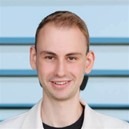
Malte Ostendarp, PhD Candidate
PhD Candidate,
University of Bremen
Malte Ostendarp is a marine biologist and PhD student in the Marine Ecology working group at the University of Bremen, Germany. His research interests focus on coral reef ecology, especially coral bleaching and potential mitigation strategies. During his Master’s thesis at the King Abdullah University of Science and Technology in Saudi Arabia, he evaluated the short-term potential of hydrogen-enriched seawater to mitigate heat stress induced coral bleaching and mortality. His PhD continues this line of research, aiming to uncover the mechanisms and potential applications of hydrogen-enriched seawater in coral reef conservation.
Coral reefs worldwide experience mass bleaching events in increasing frequency caused by global ocean warming. To buy time needed for coral reefs until global efforts can mitigate ocean warming, direct management actions are needed. Therefore, this study investigated if hydrogen addition can mitigate negative effects of heat stress as hydrogen may not only promote the degradation of harmful reactive oxygen and nitrogen species, but also reduce nitrogen fixation. We studied ecophysiological responses of two common hard corals (Acropora spp. and Pocillopora verrucosa) from the Central Red Sea between ambient (26 °C) and elevated seawater temperatures (32 °C) under ambient and hydrogen-enriched (149 – 248 µM) concentrations over 48 h. Under elevated water temperatures without hydrogen addition, P. verrucosa demonstrated a high temperature tolerance while Acropora spp. showed significant decreases in photosynthetic efficiency, maximum electron transport rate and Symbiodiniaceae cell density combined with an increase in respiration and gross photosynthesis. Interestingly, when hydrogen was added, the maximum electron transport rate of Acropora spp. was significantly higher by 28 % indicating that addition of hydrogen can mitigate negative effects of heat stress in the short-term. Therefore, the present study lays the groundwork for long-term studies and may contribute to existing strategies or lead to the development of a new species-specific approach to increase the resilience of corals to ocean warming.
As the precise mechanisms of H2 activity are currently undefined, the lack of primary target identification, coupled with difficulties regarding administration methods (e.g., dosage and dosage frequencies, and long-term effects of treatments), there is a requirement for further research to evidence how H2 can reasonably and effectively be incorporated into healthcare.
To better understand the molecular mechanism(s) behind the activity of H2, and to ascertain whether H2 can be utilised as an effective nutraceutical, this short series of videos investigates the modality and effects of H2 using a range of bioinformatical, theoretical and empirical approaches.
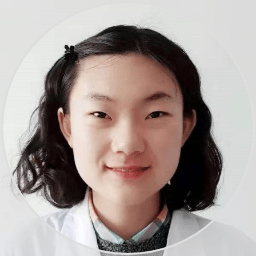
Jiayuan Zhai, PhD Student
Department of Anesthesiology,
Harbin Medical University
I’m a PhD student major in anaesthesiology. My research focus on molecular hydrogen treatment and its mechanism of neural function in perioperative period. I’ve been doing research of application and mechanism of molecular hydrogen in traumatic brain injury under my tutor Professor Wanchao Yang’s guidance, whose research achievements of molecular hydrogen were published at Brain Research , Neural Regeneration Research and European Journal of Pharmacology. I hope that our research group can discover more novel and important mechanisms of molecular hydrogen which promotes the development and popularization of molecular hydrogen medicine.
Molecular Hydrogen, a recent focus in medical research, has demonstrated therapeutic potential across various diseases, including neurodegenerative disorders, cerebral ischemia-reperfusion injury, acute cognitive dysfunction, and traumatic brain injury, as well as other neurological conditions.
Since the hypothesis was proposed in 2007 that the basis of H2 therapy is the selective neutralization of hydroxyl radical, the antioxidant effect of H2 has been recognized as its most notable benefit. Recently, various physiological effects of H2, such as anti-inflammatory and anti-apoptotic actions, have been reported. Additionally, H2 has been identified as a gaseous signaling molecule, capable of playing a role in signal transduction within organisms by regulating cellular pathways and gene expression, which can aid in neurological disorder treatment.
In recent years, our research team has demonstrated through animal experiments that H2 has therapeutic effects on traumatic brain injury (TBI). Inhaling high concentrations of hydrogen gas can improve neurological function, survival rate, alleviate pathological damage and reduce brain edema in TBI rats through antioxidant and anti-apoptotic pathways. We further established TBI-induced acute lung injury rat model and observed that H2 allivates lung injury scores, pulmonary edema and improves oxygenation index after TBI. The mechanism may be the decrease of both pyroptosis and apoptosis and the alleviation of inflammation.
In the future, scientific research should delve into the specific mechanisms behind molecular hydrogen’s protective effects and establish the clinical relevance of molecular hydrogen as a promising therapeutic intervention for various neurological disorders.
Co-Authors: Wanchao Yang, corresponding author

Dejan Javorac, MSc.
Applied Bioenergetics Lab,
Faculty of Sport and Physical Education,
University of Novi Sad, Novi Sad
Dejan Javorac, born in 1987, is a PhD student, lab technician, and teaching assistant at the Faculty of Sports and Physical Education, University of Novi Sad. He designs and tests innovative therapeutics that protect and improve mitochondrial bioenergetics and metabolism in healthy and diseased individuals. His research is broad, covering a range of pathologies, including athletic performance, traumatic brain injury, and neurodegenerative diseases. He explores the value of inhalational, topical, and oral hydrogen in these areas, aiming to significantly impact each field.
Abstract
Hydrogen-rich water (HRW) has emerged as a promising and safe therapy for sports injuries due to its potent antioxidant and anti-inflammatory properties. The molecular hydrogen (H2) in HRW scavenges reactive oxygen species (ROS), reducing oxidative stress, a key contributor to tissue damage and inflammation post-injury. Studies show HRW’s efficacy in mitigating muscle fatigue and damage, accelerating recovery, and enhancing performance. Post-exercise consumption of HRW significantly reduces markers of muscle injury, such as creatine kinase (CK) and lactate dehydrogenase (LDH), compared to placebo. HRW also lowers inflammatory cytokines like TNF-α, IL-6, and C-reactive protein (CRP), expediting inflammation resolution and pain relief. HRW shows promise in managing mild traumatic brain injury (TBI), common in sports. Intensive therapy with an oral transmucosal hydrogen formulation reduces TBI symptom severity. Our findings suggest that acute multi-session hydrotherapy with HRW is a safe and effective treatment for pain, swelling reduction, and range of motion restoration post-ankle sprain. These results support the hypothesis that hydrogen may be effective as an additional agent for the conservative treatment of soft tissue injuries in athletes, with the combination of oral and topical administration particularly powerful. Further research is needed to standardize HRW dosage and administration to optimize benefits and expand its applicability across sports-related injuries. HRW represents a promising avenue for improving sports injury management and outcomes. It could reduce downtime for athletes, allowing quicker returns to activities with less discomfort, marking an advancement in sports injury treatment.
Co-Authors: Sergej M. Ostojic, MD, PhD; Slavko Molnar PhD; Darinka Korovljev PhD, Valdemar Stajer, PhD; Nikola Todorović, MSc.

Yuxi Wei, MSc (candidate)
Department of Anesthesiology, Pharmacology, and Therapeutics, University of British Columbia, British Columbia, Canada
Yuxi is a master student in the Department of Anesthesiology, Pharmacology, and Therapeutics, UBC. She graduated as a pharmacist from Tianjin Medical University, China. She is a student under the supervision of Dr. Ismail Laher.
Obstructive sleep apnea (OSA) is associated with various health concerns including cardiovascular diseases (CVD). Continuous positive airway pressure (CPAP) treatment is the gold standard for OSA. However, numerous trials report barely any benefits of CPAP on the incidence of CVD in patients with OSA. It is commonly believed hypoxia causes oxidative stress and chronic inflammation. We hypothesized that hydrogen-rich water (HRW) can be a candidate for the treatment of OSA-related CVD.
To build an animal model of OSA, mice were housed in customized cages and exposed to intermittent hypoxia 8 hours a day with nadir oxygen levels of 5-6% for 8 weeks. Animals were treated with either regular water (RW) or HRW. C57Bl6 mice aged 8 weeks were divided into 4 groups: Normal air +RW, Normal air + HRW, IH + RW, and IH + HRW. Blood, kidneys, and aortas were collected for further analysis.
Endothelium-dependent, acetycholine induced maximum vasodilation was significantly attenuated in the IHRW compared with the control (p<0.01). HRW prevented IH-induced impairment of vasodilation compared with IHRW (p<0.05). By constructing phenylephrine response curves in the absence/presence of L-NAME (eNOS inhibitor), we demonstrated that basal NO was impaired in the IHRW group compared with the control (p<0.05); treatment with HRW reversed IH-induced alterations to control levels (IHHRW vs. IARW, p=0.275). Compared with IHRW, HRW also reduced elevated ADMA (endogenous eNOS inhibitor) levels in the IH group (p<0.01). We also demonstrate decreased levels of inflammatory cytokines (IL-6 and MCP-1), and arrested oxidative stress markers ( 8-isoprostane and 8-OHdG). Additionally, as a signaling regulator, HRW improved activities of antioxidant enzymes (Gpx-1 and Gpx-4). Our preliminary data demonstrated that HRW improves hypoxia-induced oxidative stress, inflammation, and endothelial dysfunction, and that HRW could be a promising treatment for OSA-related CVD.

Nikola Todorović, Msc.
Applied Bioenergetics Lab,
Faculty of Sport and Physical Education,
University of Novi Sad, Novi Sad
Nikola Todorovic, born in 1991, is a PhD student, lab technician, and teaching assistant at the Faculty of Sports and Physical Education, University of Novi Sad. His research focuses on the effects of molecular hydrogen and creatine on biomarkers of energy metabolism, as well as health-related lifestyle behaviors in both clinical and non-clinical populations. In recognition of his outstanding contributions to science, he was awarded the “Dr. Zoran Đinđić” prize for the best young scientist and researcher in 2023. Nikola has authored 49 scientific papers and has presented over 10 times at national and international conferences.
Abstract
Molecular hydrogen (H2, dihydrogen) is a potent gas widely used in health and disease. Previous studies have indicated that hydrogen-rich water (HRW) might help increase exercise performance, reduce ratings of perceived exertion, or enhance recovery. However, limited information is available concerning the effectiveness and safety of whole-body bathing with supersaturated HRW after DOMS-inducing exercise. This double-blind crossover design study evaluated the effects of a single-session bathing with HRW on biochemical markers of muscular damage. Six apparently healthy young men were immediately immersed in a 200 L bathtub with supersaturated HRW (8 mg of H2 per L) or control water (no hydrogen) for 30 minutes after an exercise session. Blood biomarkers of inflammation and muscular damage and Visual Analogue Scale (VAS) scores for muscle soreness were assessed at baseline (before exercise) and at 24-hour follow-up.
Two-way ANOVA revealed a significant difference between the two groups in the serum creatine kinase (CK) response throughout the intervention (P < 0.04) with considerable tendencies in other inflammatory biomarkers. A single-session HRW bath prevented a rise in circulating biomarkers of muscular damage induced by exercise at the 24-hour follow-up, retaining the levels of all biomarkers similar to the baseline values (P > 0.05). No participants reported any significant side effects during the trial. The topical use of HRW bathing could be considered a safe and effective strategy to attenuate muscular damage after high-intensity eccentric exercise.
Co-Authors: Sergej M. Ostojic, MD, PhD; Valdemar Stajer, PhD; Dejan Javorac, Msc.
The H2 Summit is Supported By IJMS
Presenters at the H2 Summit by MHI receive a special 20% discount to publish in the special issue on molecular hydrogen.

